According provided by YONGNUO LENS YN50mm F1.4 lens. Many thanks directly to Yongnuo.
Navigation
- In short
- History
- All lenses from Yongnuo
- Main Specifications
- Assembly
- Focusing
- Firmware Upgrade
- Image quality
- Examples of photos on the camera Kf = 1.0
- Examples of photos on the camera Kf = 1.6
- Sample photos in processing
- Differences from Canon 50 / 1.4 USM
- My experience
- Alternatives
- Price
- Results
- User Comments
- Add your review or question on the lens
In this review, the YONGNUO LENS YN50mm F1.4 will be abbreviated as 'Yongnuo 50 / 1.4'.
In short
Yongnuo 50 / 1.4 is a fifty-kopeck piece from Yongnuo for Canon cameras. Heavy, well-built, with decent image quality. It has a fairly low price tag and is a very attractive solution for amateur photographers. In fact, Yongnuo 50 / 1.4 is the cheapest autofocus lens with f / 1.4 for full-frame SLR cameras.
Yongnuo 50 / 1.4 turned out to be a worthy lens, it can be safely used for amateur photography. On full-frame cameras, this is a standard (in terms of focal lengths) lens with a very wide range of applications. On cropped cameras, the Yongnuo 50 / 1.4 can perform quite well as a replacement for a portrait lens.
Here I simply must leave a spoiler about fifty dollars. The creative and practical potential of a fast fifty dollars is really difficult to overestimate. It is suitable for a wide range of photo tasks. Photo enthusiasts often use it as a portrait lens, especially on cropped cameras (cameras with an APS-C or 4/3 sensor). Many just want a fast light fixed lens, in addition to its first kit lens. Diaphragm F / 1.4 exactly four steps wider aperture F / 5.6, which is used in the vast majority of 'dark' whale lenses at the long end. In numerical terms, this means that Yongnuo 50 / 1.4 is approximately 16 times brighterthan, for example, whale Canon EF-S 18-55 / 3.5-5.6 IS STMwhich uses a maximum relative aperture of only f / 50 at 5.6 mm of focal length. The calculation in the difference of the relative aperture (count the aperture) is performed elementarily: (5.6 * 5.6) / (1.4 * 1.4) = 16.
History
April 29 2014 at the show 'The 17th China International Photograph & Electrical Imaging Machinery and Technology' was presented prototype Yongnuo 50 / 1.4which outwardly was very similar to the original Canon 50 / 1.4 USM. After this exhibition prototype Yongnuo 50 / 1.4 did not appear anywhere else, mass production and its sales were not adjusted. Data from the official website has been deleted (but the internet remembers everything).
Below is a view of the prototype 'YONGNUO LENS EF 50mm 1: 1.4 YONGNUO LENS MADE IN CHINA':
30 May 2018 On the official website there is a modern Yongnuo 50 / 1.4 for Canon EOS cameras, shown in this review. Some people call this model Yongnuo 50 / 1.4 Mark II, I will not do that.
August 18 2018 was introduced Yongnuo 50 / 1.4NE for Nikon cameras.
All Yongnuo Lenses
Bayonet mount Sony FE [DF, FULL FRAME] и Sony E[DA,APS-C]:
- yongnuo 11 mm 1:1.8 DA DSM WL S [announcement]
- yongnuo 16 mm 1:1.8 DA DSM S [announcement]
- yongnuo 35 mm 1: 2 DF DSM S [review]
- yongnuo 50 mm 1: 1.8 DF DSM S [announce]
- yongnuo 50 mm 1:1.8 DA DSM S [overview]
- yongnuo 85 mm 1: 1.8 DF DSM S [review]
- yongnuo 85 mm 1:1.8 DF DSM S II [announcement]
Bayonet mount Canon RF (mirrorless full frame):
- yongnuo 35 mm 1: 2 DF DSM R [review]
- yongnuo 35 mm 1:2 CR [announcement]
- yongnuo 50 mm 1:1.8 DF DSM R [to be announced]
- yongnuo 85 mm 1:1.8 DF DSM R (two subversions with different names) [review]
Bayonet mount Nikon Z [DF, FULL FRAME + DA,APS-C]::
- yongnuo 11 mm 1:1.8 DA DSM WL Z [announcement]
- yongnuo 35 mm 1:2 DF DSM Z [announcement]
- yongnuo 50 mm 1:1.8 DF DSM Z [announcement]
- yongnuo 50 mm 1:1.8 DA DSM Z [review]
- yongnuo 85 mm 1:1.8 DF DSM Z [announcement]
Bayonet mount fujifilm x [DA,APS-C]:
- yongnuo 11 mm 1:1.8 DA DSM WL X [announcement]
- yongnuo 50 mm 1:1.8 DA DSM X Pro [Announcement]
- yongnuo 50 mm 1:1.8 DA DSM X [announcement + overview]
For the system Micro 4 / 3:
- yongnuo 25 mm 1: 1.7 [review]
- yongnuo 42.5 mm 1: 1.7 [review]
- yongnuo 42.5 mm 1:1.7 II [overview]
- yongnuo 12-35 mm 1:2.8-4 STM ASPH MACRO [announcement]
Bayonet mount Nikon f (mirrored full frame):
- yongnuo 14 mm 1: 2.8 [overview]
- yongnuo 35 mm 1: 2 [overview]
- yongnuo 40 mm 1: 2.8 [overview]
- yongnuo 50 mm 1: 1.8 [review]
- yongnuo 50 mm 1: 1.4 E [overview]
- yongnuo 60 mm 1:2 MACRO MF [overview]
- yongnuo 85 mm 1: 1.8 [overview]
- yongnuo 100 mm 1: 2 [overview]
Bayonet mount Canon EF (mirrored full frame):
- yongnuo 14 mm 1:2.8 [review N]
- yongnuo 35 mm 1: 2 [review]
- yongnuo 35 mm 1: 1.4 [overview]
- yongnuo 35 mm 1: 1.4C DF UWM [announce]
- yongnuo 50 mm 1: 1.8 [overview]
- yongnuo 50 mm 1:1.8 II [overview]
- yongnuo 50 mm 1: 1.4 [overview]
- yongnuo 60 mm 1:2 MACRO MF [review N]
- yongnuo 85 mm 1: 1.8 [review]
- yongnuo 100 mm 1: 2 [overview]
Cameras:
- Yongnuo YN433 (2023, Micro 4/3, 20 MP, 4K)
- Yongnuo YN455 (2021, Micro 4/3, 20 MP, 4K)
- Yongnuo YN450/450M (2019, Micro 4/3 -> Canon EF, 16 MP, 4K)
Lenses and cameras and many other products from Yongnuo can easily be found at Authorized Yongnuo Dealer / Store on Aliexpres.
My video on all Yongnuo lenses here.
Main technical characteristics of YONGNUO LENS YN50mm F1.4
| Review Instance Name | Near the front lens: YONGNUO LENS YN50mm F1.4 Ø58mm YONGNUO LENS MADE IN CHINA. On the YOUNGNUO DIGITAL 50mm. On the box: YOUNGNUO DIGITAL Standart prime lens YN50mm F1.4 |
| Basic properties |
|
| Front Filter Diameter | 58 mm, metal thread for filters |
| Focal length | 50 mm
|
| Zoom ratio | 1 X (this is a fixed lens, it does not have a zoom) |
| Designed by | for full-format digital cameras. The lens is suitable for everyone. Canon EOS cameras |
| Number of aperture blades | 7 rounded petals |
| Tags | bayonet mount tag, window with a scale for focusing distances in meters and feet, DOF scale (only for F / 22) |
| Diaphragm | F / 1.4 to F / 22 |
| MDF | 0.45 m, maximum magnification factor 0.15x (1: 6.67) |
| The weight | 572 g |
| Optical design | 9 elements in 7 groups. The lens uses special optical elements with an extremely high refractive index (shown in blue)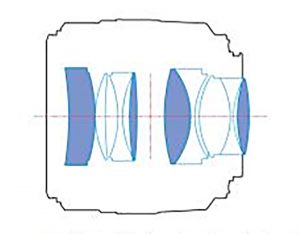 |
| Lens hood | Bayonet type hood. The hood is not included in the delivery, the instruction does not indicate its type / marking. Fit Canon ES-71II or any clone of it |
| Manufacturer country | MADE IN CHINA (Made in China) |
| Period | May 30, 2018 |
| Instructions | View my scan (English only) |
| Price | Aliexpress prices (cheapest) |
The optical design of the lens attracts a massive concave front element. Most likely the optical design takes its roots from Carl Zeiss 1,8 / 50 UltronVoigtlander Color-ultron 1.8 / 50. Of modern autofocus lenses, a similar concave front element can be found in Carl Zeiss Sonnar FE 1,8 / 55 ZA T * (Aka Sony SEL55F18Z FE 1,8 / 55) Most likely, the optical scheme of the Yongnuo 50 / 1.4 belongs to some old and unreleased Nikon / Canon lens, which did not reach mass production. thanks Dmitry Evtifeev for thoughts about the origin of the optical design of this lens.
Assembly
The lens came to the review completely new.
In a small box is a warranty card, instructions in Chinese and English, a card with a production date of 30-07-2018, a desiccant and the lens itself with a front (YN-58) and a back cover. The front and rear lenses of the lens are initially covered with special transport films of blue color. Unfortunately, one of these films left a small mark on the front lens, which I easily cleaned with a special cloth for optics.
In general, the lens is well assembled. Yongnuo 50 / 1.4 has metal mount mount. The focus ring is not rubberized, plastic, but wide enough and pleasant to use. The lens housings are made mainly from metal. The thread for the filters is also metal. It is stated that the contacts of the microprocessor are gold-plated.
The weight of the Yongnuo 50 / 1.4 is almost 600 grams. In the hands of the lens, it feels like a solid thing, many times better than Yongnuo 50 / 1.8 II. Yongnuo 50 / 1.4 lens weighs about the same as TOP original Canon 50 /1.2 L USM. Paired with fairly heavy cameras, the Yongnuo 50 / 1.4 allows you to get a good weight balance of the camera + lens bundle.
The design of Yongnuo 50 / 1.4 is very similar to Canon Compact-Macro 50 / 2.5.
Diaphragm consists of 7 petals and form a hole in the shape of a regular heptagon, while in the photographs in the blur zone rather round discs of blur appear in the range F / 1.4-F / 2.5.
The lens has a USB port in the lower rear of the lens (in the bayonet area). The port serves to update the firmware (described in detail about this in the relevant chapter) The USB port does not have a rubber plug.
Unfortunately, the bundle does not include a hood, a bag for transportation, a USB cable and a software disk (software can only be downloaded from the official website).
Canon ES-50 II hood is suitable for Yongnuo 1.4 / 71. I used analog Hoods Canon ES-71 II (for original lens Canon 50 / 1.4 USM). The hood mounts on the lens barrel rather than the retractable 'trunk', which adds strength to the structure and also makes front lens movement less noticeable. Important: this lens hood is not installed in the opposite direction (in transport mode), the lens is too thick and the lens hood is stuck in the middle.
Yongnuo 50 / 1.4 does not have a rubber mount mount and is not an all-weather lens.
UPDATE 1: Once I partially unscrewed the front lens block together with a polarizing filter, after which I screwed the block very tightly back and the similar embarrassment was no longer repeated.
UPDATE 2: I visited the review version YONGNUO LENS YN50mm F1.4N E for Nikon cameras, which was immediately out of the box with a loose, half-unscrewed trunk. I tightly twisted my arms around the trunk and a similar problem was no longer repeated.
Focusing
For focusing, Yongnuo 50 / 1.4 uses micro motor and is an analog of Canon MM (Micro Motor). Auto focus will work with any SLR camera Canon EOS. Most likely, mirrorless cameras with an appropriate adapter should not have any special problems.
Focus speed average (closer to low), significantly lower (about 2 times) than the original lens Canon 50 / 1.4 USM. Auto focus is very noisy.
When shooting a video using auto focus and the built-in microphone in the camera, the noise level is very strong. This noise from the focus motor makes viewing the captured video unpleasant.
I worked with the lens on the camera Canon EOS 5D с simple 9-point focusing system and on camera Canon EOS 750D (aka Canon Digital Rebel T6i, aka Canon Kiss Digital X8i) from 19-point advanced focusing system and Hybrid CMOS AF III for live view focus. Focusing tenacity is not bad, but still there are more focus errors than you might expect. Focusing errors are unsystematic and are often associated with low depth of field at F / 1.4.
On camera Canon EOS 750D I checked the presence of the back and focus front at different focusing distances (infinity and MDF as well). The shots taken using the Live View mode (which theoretically does not suffer from back / front focus) were used as a measure. Focusing accuracy using phase focus sensors, both central and lateral, completely coincided with the Live View mode. On camera Canon EOS 750D all focus modes in Live View work well, including focus with automatic face detection.
The focus ring is plastic, wide, in manual focus mode it rotates approximately 225 degrees (5/8 of a full 360 degree view). When extreme positions are reached, the ring does not abut, but continues to rotate very slowly and very tightly. Manual focus is convenient. During manual focusing is heard annoying sound like 'plastic rubs against plastic or metal', while the ring rotates smoothly and quite pleasantly. When changing the direction of focus, there is small lag (delay), but it does not cause much discomfort.
I used manual focus on the Yongnuo 50 / 1.4 for two days, shooting more than two thousand frames in this mode. Manual focus is really convenient, although there are unpleasant little things described above.
There is an 'AF-MF' (auto focus / manual focus) focus mode switch on the lens barrel. Switch positions are reversed compared to original lenses ('AF-MF' <-> 'MF-AF'). During auto focus focus ring remains stationarywhile it can be freely rotated 360 degrees without any effect on focusing. Unfortunately, unlike many original Canon lenses, the Yongnuo 50 / 1.4 does not support Canon FTM (or similar) manual focus control. The direction of rotation of the focus ring is opposite to the original Canon 50 / 1.4 USM.
Lens does not have internal focus, during focusing, the frame of the body ('trunk') moves forward about 1.5 centimeters, while front lens does not rotate. It is possible to use various filters without any problems.
The minimum focusing distance is 45 cm, while you can get the maximum magnification for macro photography 1: 6.67, which is typical for a large number of such fifty dollars.
Very important: During focusing to infinity, when the focusing ring is fully extended (with a slight overshoot beyond the 'infinity' mark itself), the mirror of full-frame cameras such as the Canon EOS 5D clings to the rear lens or the rear lens barrel. Usually, the mirror does not fall back, resting on the lens or rear lens frame of the Yongnuo 50 / 1.4. When the lens is focused to infinity without this slight overshoot, there are no problems with the mirror.
The lens has a window with a distance scale with marks in meters and feet. The scale is small, on it there are marks for 3, 1.5, 1, 0.8, 0.6, 0.5, 0.45 meters and a label of 'infinity'. There is also a label with the depth of field scale, but only for the value of F / 22. There is no tag for working in the infrared spectrum.
Other focusing features:
- on the distance scale, the focus ring has a large 'travel beyond infinity'. The Yongnuo 50 / 1.4 does not have a hard infinity mechanical stop that allows you to accurately and quickly focus the lens to infinity under any external temperature conditions. For accurate aiming at infinity, you cannot just bring the focusing ring to its extreme position.
- Focus shift (shift-focus) is missing.
- Yongnuo 50 / 1.4 has a tangible 'Focus Breathing' effect (changes in viewing angle during focusing). During focusing towards the MDF, the viewing angle decreases.
- Teleconverter compatibility unknown
- Focusing is performed by simultaneously moving the entire lens block (all lenses) relative to the focal plane
Important: Yongnuo 50 / 1.4 - a lens from a third-party manufacturer. It may happen that it will not work correctly with some Canon cameras. It is authentically known that the lens has focus problems including Live View on cameras Canon 6D, 6D Mark II, 5D, 5D Mark II, 5D Mark III, 60D.7D 750D.
USB firmware update
On the lens housing of the Yongnuo 50 / 1.4 there is a USB port with which you can update the lens software (firmware / firmware). Unfortunately, the functionality of the YNLensTool Updater Version 1.00 program, which is responsible for working with the lens, is very meager. You can only see the current firmware version and update it to a new one. Firmware versions can be found on the official website. I found firmware v1.03 for my Yongnuo 50 / 1.4 here.
A widespread USB 2.0 MICRO-B port (like mobile phones) is used for connecting to the lens. A USB cable is not included. To connect, I used a USB cable for my android phone. My lens had the latest firmware V1.03 (2018.6.27), and therefore I did not update it.
A firmware update, most likely, allows you to improve the compatibility of the lens with new cameras, improve the autofocus, eliminates some other errors. I appreciated the usefulness of this function when working with the lens Yongnuo 100mm 1: 2 for Nikon cameras. But still it’s very bad that there is no way to roll back (restore) the original firmware that came out of the box.
To upgrade the firmware (software) of the lens:
- Turn off the camera, detach the lens
- Open program YNLens Updater for updating (program for Window or MacOs can be downloaded on the official website here)
- Attach the lens to the computer using a USB cable. If everything went well, the program will automatically detect the connected lens
- Click [Browse] and select the file with the desired firmware
- Click [Start] to start the update. Wait for the update to finish
- Disconnect the cable, attach the lens to the camera and start shooting
UPDATE: some users have noted a deterioration in the quality of autofocus with the new firmware. I found the archive with the old firmware, you can download from this link.
Image quality
As for its class, Yongnuo 50 / 1.4 shows quite acceptable quality of the created image.
Sharpness
- in the center of the frame at F / 1.4 for resolution, nothing surprising, but still it is enough for many photo tasks
- F / 1.4 aperture at 24 megapixels of the cropped sensor shows itself weakly, at 12 megapixels full frame - good
- there is a noticeable drop in sharpness to the edges of the frame at f / 1.4
- good resolution in the center of the frame on covered apertures after F / 2
- good resolution at the edges of the frame on covered apertures after f / 4
- good contrast
Distortion
- small barrel distortion
- the overall level of distortion is at a level typical for such lenses
- the nature of distortion is unified, easily corrected in the editor
Vignetting
- general level vignetting is at the level typical for such lenses
- noticeable vignetting observed most strongly at F / 1.4-F / 2
- vignetting amplified with focus towards MDF
- on APS-C cameras with a sensor vignetting practically disappears at F / 2.0-F / 2.8
- vignetting easily fixable in the editor
- vignetting not amplified when using a sufficiently thick filter (with high sides)
Aberration
- open diaphragms have a noticeable amount of spherical and chromatic aberrations
- the strongest chromatic aberration visible at the edges and corners of the image
- general level HA is at the level typical for such lenses
- there is strong friging (HA in the blur zone) and blooming (HA on very contrasting small details)
- there is a strong coma in the corners of the image on f / 1.4-f / 2.0
Rest
- diaphragm forms fairly smooth discs of blur only in the range of F / 1.4-F / 2.5, at values of F / 2.8-F / 22 you can clearly trace the regular polygons from point light sources in the blur zone.
- color rendering is neutral, pleasant. The lens uses front lens enlightenment, which casts green shades. Many modern lenses have enlightenment that shimmers like the Yongnuo 50/1.4.
- in some situations, the lens is very afraid of side and back light. The lens can catch a noticeable flare of the frame.
- the wide aperture of F / 1.4 creates a strong blur of the front / rear plan, while the nature of the bokeh is quite even and pleasant. It should be noted that bokeh perception is mostly a subjective factor.
On covered apertures starting at about F / 2.8, distinguish between Yongnuo 50 / 1.4 and Canon 50 / 1.4 USM it will be extremely difficult.
Important: at the time of writing this review, there was no Yongnuo 50 / 1.4 profile for popular RAW converters. But I noticed that for Yongnuo 50 / 1.8 lenses for Nikon / Canon, as well as for Yongnuo 35 / 2.0 for Canon, lens profiles for Adobe Camera Raw and Adobe Lightroom of the latest versions have already appeared, therefore, most likely, the appearance of a lens profile for Yongnuo 50 /1.4 is just a matter of time.
Full frame sample photos
All sample photos in the gallery below were shot using a camera Canon EOS 5D and the Yongnuo 50 / 1.4 lens. Photos taken using RAW ('.CR2') file conversion with Canon original utility Digital Photo Pprofessional 4 (Canon DPP) without any changes (without treatment).
RAW source photos ('.CR2') can be downloaded at this link... Original 'JPEG' photos can be download from this link.
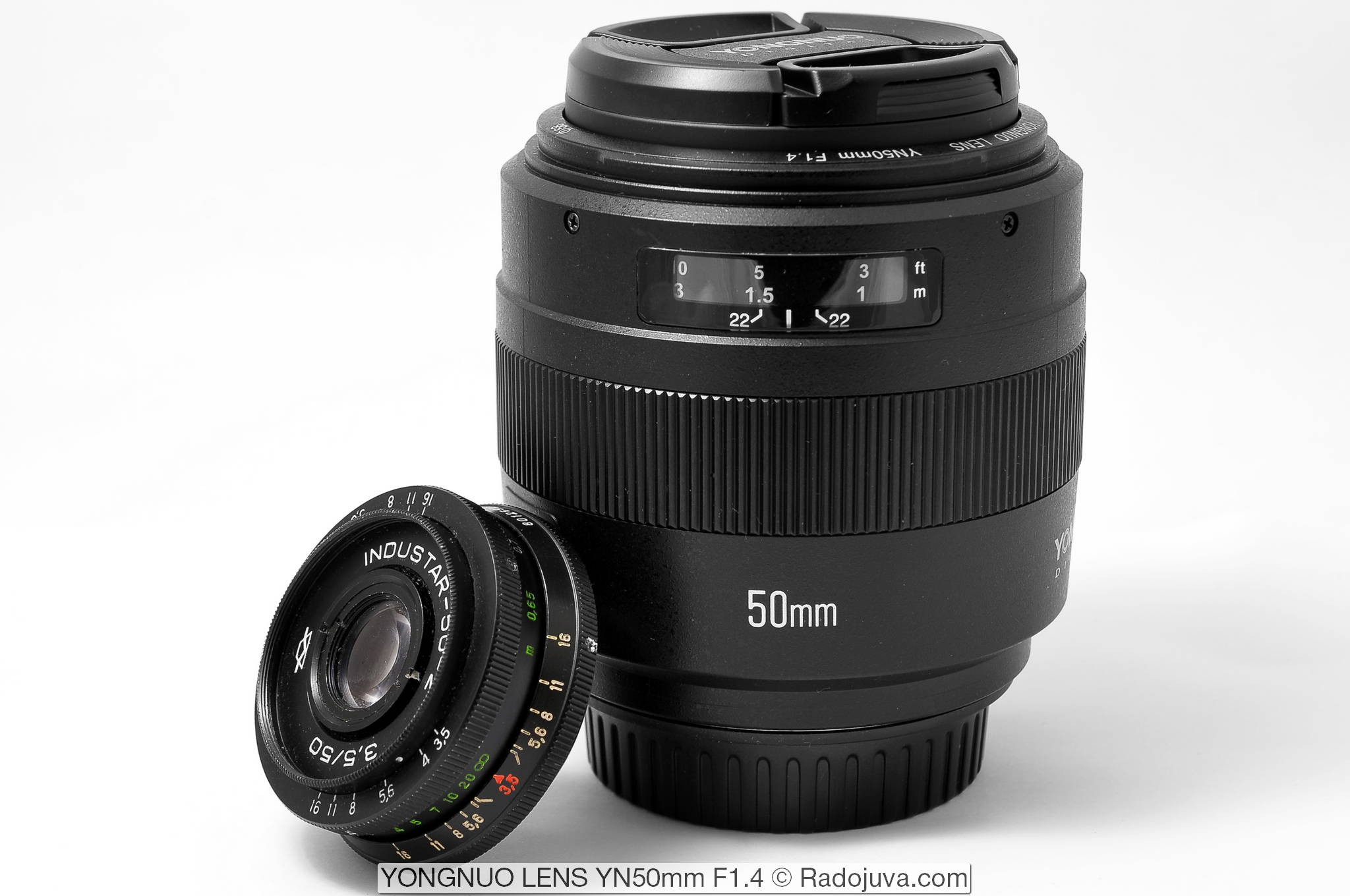
Manual baby fifty dollars INDUSTAR-50-2 3,5 / 50 and modern Yongnuo YN 50mm f / 1.4
Sample photos on crop
All sample photos in the gallery below were shot using a camera Canon EOS 750D (aka Canon Digital Rebel T6i, aka Canon Kiss Digital X8i) and a Yongnuo 50 / 1.4 lens without a hood. On-camera JPEG without additional processing. Let me remind you that the pixel density of 750D 20% higher than fifty megapixel Canon EOS 5Dsr/Canon EOS 5DS. Some photos were taken using a polarizing filter. HOYA 58mm PL-CIR.
Photos in the gallery are reduced in size, resize up to 2048 X 1535 pixels (about 3.1 MP) was taken using the free software FastStone Photo Resizer 3.1. Data was imprinted at the bottom of the photos. EXIF (excerpt, aperture, ISO). When reducing the size of photos, I use a quality equal to 80% of the original. This percentage of quality is more than enough to convey all the details in the photo without the excess weight of the file in the 'JPEG'. With 3 MP, you can print photos up to A4 without any problems. The light weight of the photos allows you to quickly view sample photos for general acquaintance with the capabilities of the lens and allows you to save photo loading time and disk space on my site. When viewing photos on the display of different devices, the site automatically adjusts the photos to the size of the device used. To view a 1: 1 photo pixel by pixel, just open it in a new browser tab, do it as easy as clicking on the photo thumbnail with the middle mouse button (by scrolling) or using the 'open link in a new tab / window' context menu.
'JPEG' source photos can be download from this link... Original RAW ('.CR2') photos can be download from that link.
UPDATED
More sample photos for this lens can be found in the Canon EOS 5D review.
Sample photos in processing
Photos in small processing can look in my gallery on the service 500Px.
Differences from Canon 50 / 1.4 USM
At the time of this review, Canon only had one such lens, namely Canon 50 / 1.4 USM, with him I will compare Yongnuo 50 / 1.4.
Advantages of Canon 50 / 1.4 USM over Yongnuo 50 / 1.4:
- Canon 50 / 1.4 USM uses 8 aperture blades. Yongnuo 50 / 1.4 aperture blades have only 7
- Canon 50 / 1.4 USM significantly smaller in size
- Canon 50 / 1.4 USM approximately twice as easy
- Canon 50 / 1.4 USM focuses much quieter
- Canon 50 / 1.4 USM focuses significantly faster
- Canon 50 / 1.4 USM uses Micro USM Ultrasonic Focusing Motorand Yongnuo 50 / 1.4 uses a conventional micro-motor
- Canon 50 / 1.4 USM has a feature continuous manual focus control Canon FTM
- Canon 50 / 1.4 USM additionally has infrared label
- Canon 50 / 1.4 USM has rubberized focus ring no lag
- Canon 50 / 1.4 USM has more usual directions rotate the focus rings and focus mode switch AF / MF
- Canon 50 / 1.4 USM Profile sewn into modern camerasthat can automatically correct some types of distortion, such as distortion or vignetting. Also, the profile for the Canon 50 / 1.4 USM is present in almost all modern RAW converters and allows you to quickly get rid of some distortions.
Advantages of Yongnuo 50 / 1.4 over Canon 50 / 1.4 USM:
- Yongnuo 50 / 1.4 25 years newer. Original Canon 50 / 1.4, which was introduced back in 1993
- Yongnuo 50 / 1.4 costs approximately half as much
- Yongnuo 50 / 1.4 uses more complex and unusual optical design... Canon 50 / 1.4 USM uses the classic Gaussian dual lens design, inherited from Canon FD 50mm f / 1.4 and used in a huge number of old 50 / 1.4 class XNUMXs (as an example - Nikon 50 / 1.4D)
- Yongnuo 50 / 1.4 has USB port for firmware upgrade
- Yongnuo 50 / 1.4 has more long stroke focus ringwider focus ring
The optical performance of both lenses is at a similar level. The network has user reviews where you can find information that the Yongnuo 50 / 1.4 is slightly better at open apertures in the center of the frame and slightly worse at the edges and corners than the original Canon 50 / 1.4 USM.
Alternatives
Below is a list of fifty-fifty lenses and lenses that are very close in their focal length to 50 mm, which support auto focus and are suitable for full-frame cameras Canon EOS.
Canon:
| Canon Lens EF 50mm 1:1.8, version with a focusing distance window and metal mount | March 1987 | View price |
|
Canon Lens EF 50mm 1:1.8 II, the second version without a window of focusing distances and a plastic bayonet mount. This lens exists in two subversions: Subversion fundamentally no different |
December 1990 | View price |
| Canon EF Lens 50mm 1:1.8 STM | May 2015 | View price |
| Canon EF Lens 50mm 1:1.4 Ultrasonic | July 1993 | View price |
| Canon EF Lens 50mm 1:1.2 USM Ultrasonic | January 2007 | View price |
| Canon EF Lens 50mm 1:1.0 l Ultrasonic | September 1989 | View price |
| Canon Compact macro Lens EF 50mm 1:2.5 | December 1987 | View price |
| Canon lens RF 50 mm F1.2 L USM | September 2018 | View price |
Tamron:
| Tamron SP 45mm F /1.8 Di VC USD F013 | September 2015 | View price |
Sigma:
| Sigma 50mm 1:1.4 DG HSM EX, this lens exists in two versions with a different type of body coating | March 2008 | View price |
| Sigma 50mm 1:1.4 DG HSM A (Art) | January 2014 | View price |
| Sigma 50mm 1:2.8 Macro | 1990 | View price |
|
Sigma 50mm 1:2.8 Macro EX, there was a copy of this lens under the name Quantaray 50mm 1:2.8 Macro |
1998 | View price |
| Sigma 50mm 1:2.8 DG Macro EX | June 2004 | View price |
Tokina:
| Tokina Opera 50mm F1.4 FF | February 2018 | View price |
Yongnuo:
|
There are several sub-versions with different spelling of the name near the front lens
Subversion fundamentally no different |
December 2014 | View price |
|
There are two options, depending on the color of the case: the black or white |
May 2018 | View price |
| Yongnuo Lens 50mm 1:1.4there was another prototype Yongnuo Lens EF 50mm 1:1.4 | May 2018 | View price |
My experience
Я ecstatic from Yongnuo 50 / 1.4. For a little money, it turned out to be a perfectly suitable fifty dollars with a fully functional F / 1.4 aperture (for some photo tasks).
I will dwell on the price separately. Yongnuo 50 / 1.4 is:
- cheapest autofocus fifty dollars for Canon SLR cameras with F / 1.4
- the cheapest fifty dollars among all autofocus fifty dollars with F / 1.4, which you can buy new
- the cheapest autofocus full-frame lens with f / 1.4
- Yongnuo 50 / 1.4 is cheaper than not only any full-frame lens with F / 1.4, but also any cropped lens with F / 1.4
Yongnuo 50 / 1.4 costs a little more than the original Canon 50 / 1.8 STM... F / 1.4 aperture is about 2/3 brighter than f / 1.8. As a result, what to choose is a difficult and open question. For myself, in particular for photography (not for video), I would still stick to Yongnuo 50 / 1.4. But for the video, I would still choose the original Canon 50 / 1.8 STM.
Not so long ago I had a brand new star super monster on the review HD PENTAX 1: 1.4 50mm SDM AW DFA * and I should note that Yongnuo 50 / 1.4 has much less pronounced longitudinal aberrations (fringing), which color contrast transitions in the blur zone in green and purple. Although, of course, in general HD PENTAX 1: 1.4 50mm SDM AW DFA * significantly better than the budget Yongnuo 50 / 1.4.
I took Yongnuo 50 / 1.4 several times for shooting as a lens for the second camera. Behind three weeks of viewing time I took about 6000 frames and did not notice any glitches or malfunctions in the Yongnuo 50 / 1.4.
Comments on this post do not require registration. Anyone can leave a comment. Many different photographic equipment can be found on AliExpress.
Prices
Yongnuo 50 / 1.4 is not a very expensive lens. Easiest and cheapest Buy Yongnuo 50 / 1.4 on aliexpress.comfor example verified seller here at this link.
Results
The Yongnuo 50 / 1.4 is a very functional lens for little money. Yongnuo has recently been producing increasingly sophisticated lenses with good capabilities. In many situations, Yongnuo 50 / 1.4 can be an excellent replacement for the original Canon 50 / 1.4 USM.
Advantages
- low cost ($ 150-180 for the new Yongnuo 50 / 1.4). It is the cheapest F / 1.4 AF lens of any AF lens.
- high aperture
- unusual / unique optical design. The optical scheme uses special elements with an extremely high refractive index. The front element is concave (a rarity for this kind of lens)
- USB port for firmware upgrade
- convenient manual focus, the focus ring rotates 225 degrees
- there is a window with a scale of focusing distances
- the filter frame does not rotate during focusing
- fixed focus ring during auto focus (e.g. Canon 50 / 1.8 II the ring rotates and cannot be touched)
- good build quality: metal bayonet mount, most of the body is metal, reliable and comfortable covers, bayonet type hood, hood is not mounted on the trunk
- depth of field scale, no focus shift
- seven-petal diaphragm, round discs of blur in the range of F / 1.4-F / 2.5
- nice / neutral drawing, which can be used as a good artistic technique during portraiture
- Confident sharpness starting at f / 1.4 in the center of the frame. Moderate level of basic optical distortion (aberration, vignetting, distortion) comparable to the original Canon 50 / 1.4 USM
Disadvantages
- limited options for adjusting the lens via the USB port. You can only upgrade the lens firmware. Cannot roll back firmware to previous version
- rear lens or rear lens barrel may interfere with the mirror of some full-frame Canon EOS cameras during 'infinity flight' focusing
- I once unscrewed a light filter along with the front of the lens (the problem was easily solved by more tightly screwing the front lens unit)
- high weight (572 grams in Yongnuo 50 / 1.4 versus 290 grams in Canon 50 / 1.4 USM)
- during focusing towards MDF, the front of the frame (trunk) moves forward
- average focusing speed, significantly lower than that of Canon 50 / 1.4 USM
- the usual micro focus motor and, as a result, the lack of the function of constant manual focus control similar to, for example, the FTM mode Canon 50 / 1.4 USM
- tangible noise from the focus motor
- unsystematic focusing errors (but it cannot be said that there are tangible problems with focusing)
- plastic focus ring, unpleasant rubbing sound during focusing
- a small lag of the focus ring during manual focus when changing the direction of rotation
- the direction of rotation of the focus ring is opposite to the original Canon 50 / 1.4 USM.
- no hoods included, no official information on compatible hoods
- there is no basic dust and moisture protection (for example, Nikon 50 / 1.4G there is a rubber mount seal)
- tangible effect of 'Focus Breathing' (changes in viewing angle during focusing)
- hole aperture at values F / 2.5-F / 22 it is poorly rounded and is a regular heptagon
- there is no tag for working in the infrared spectrum, the depth of field and focusing distances are small
- there is incompatibility with some cameras and / or teleconverters (no exact data)
- lack of data about the lens in modern cameras, which makes it difficult to automatically correct some types of optical distortion (distortion, vignetting etc.)
- lack of a lens profile in popular RAW converters (temporary drawback, you can create a profile yourself or wait for its release)
- the survivability of this lens and the variation in quality are unknown. Little information on Yongnuo Certified Lens Service Centers
- certain imperfections in the image (poor sharpness at F / 1.4 at the corners and edges of the image, poor resistance to side light without a lens hood, a set of optical distortions characteristic of such fifty dollars)
Material prepared Arkady Shapoval. Training/Consultations | Youtube | Facebook | Instagram | Twitter | Telegram

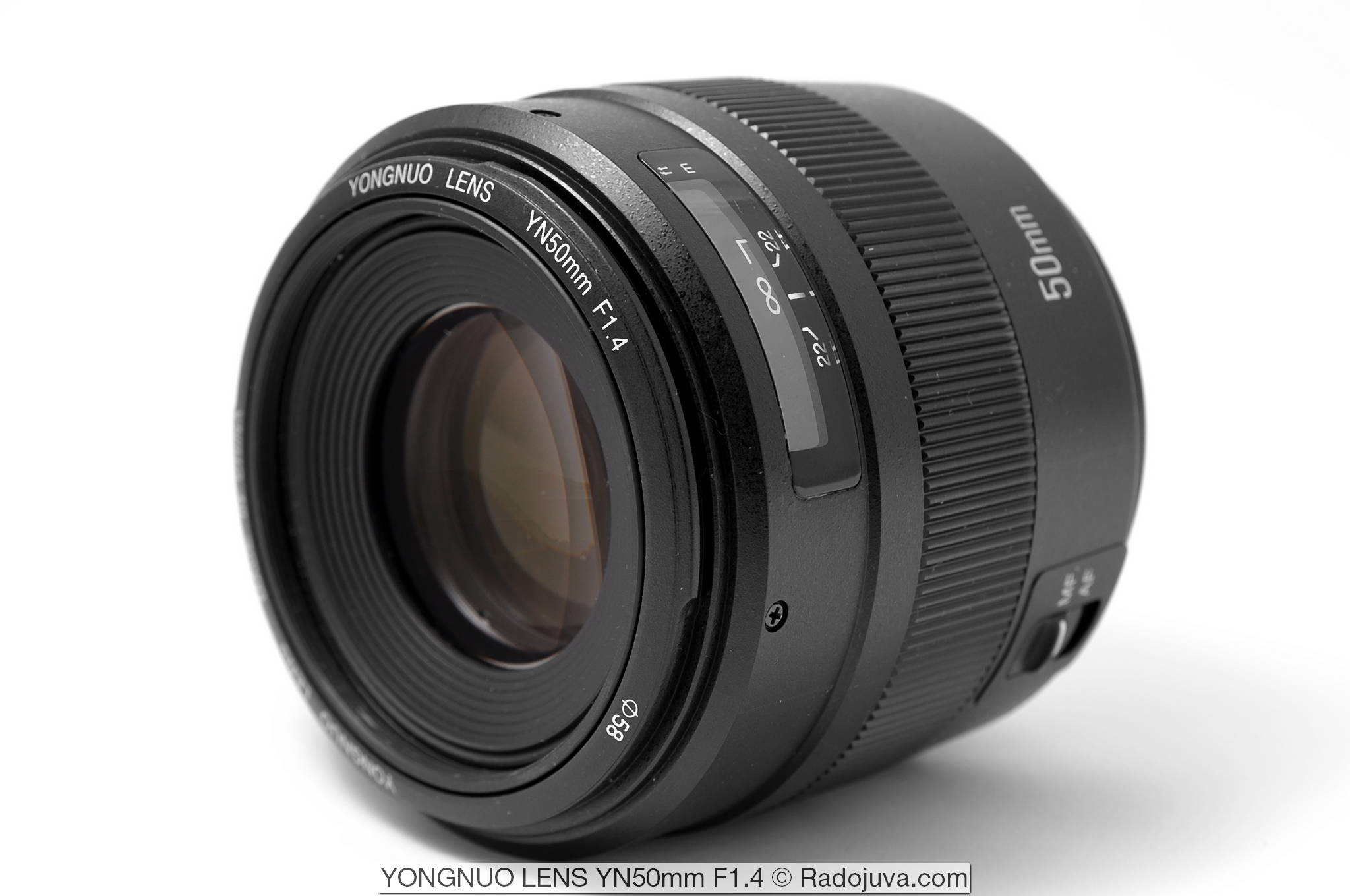
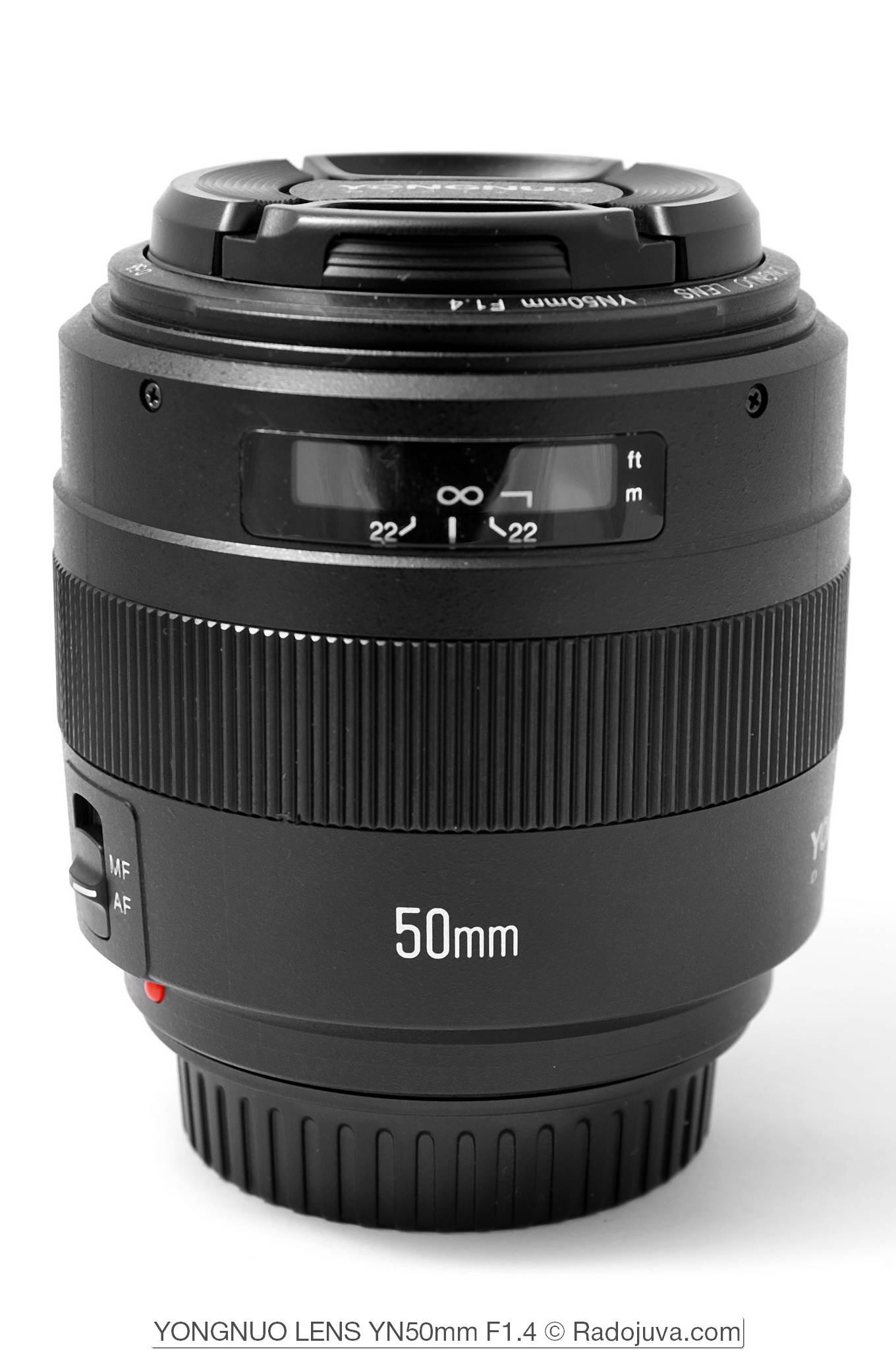
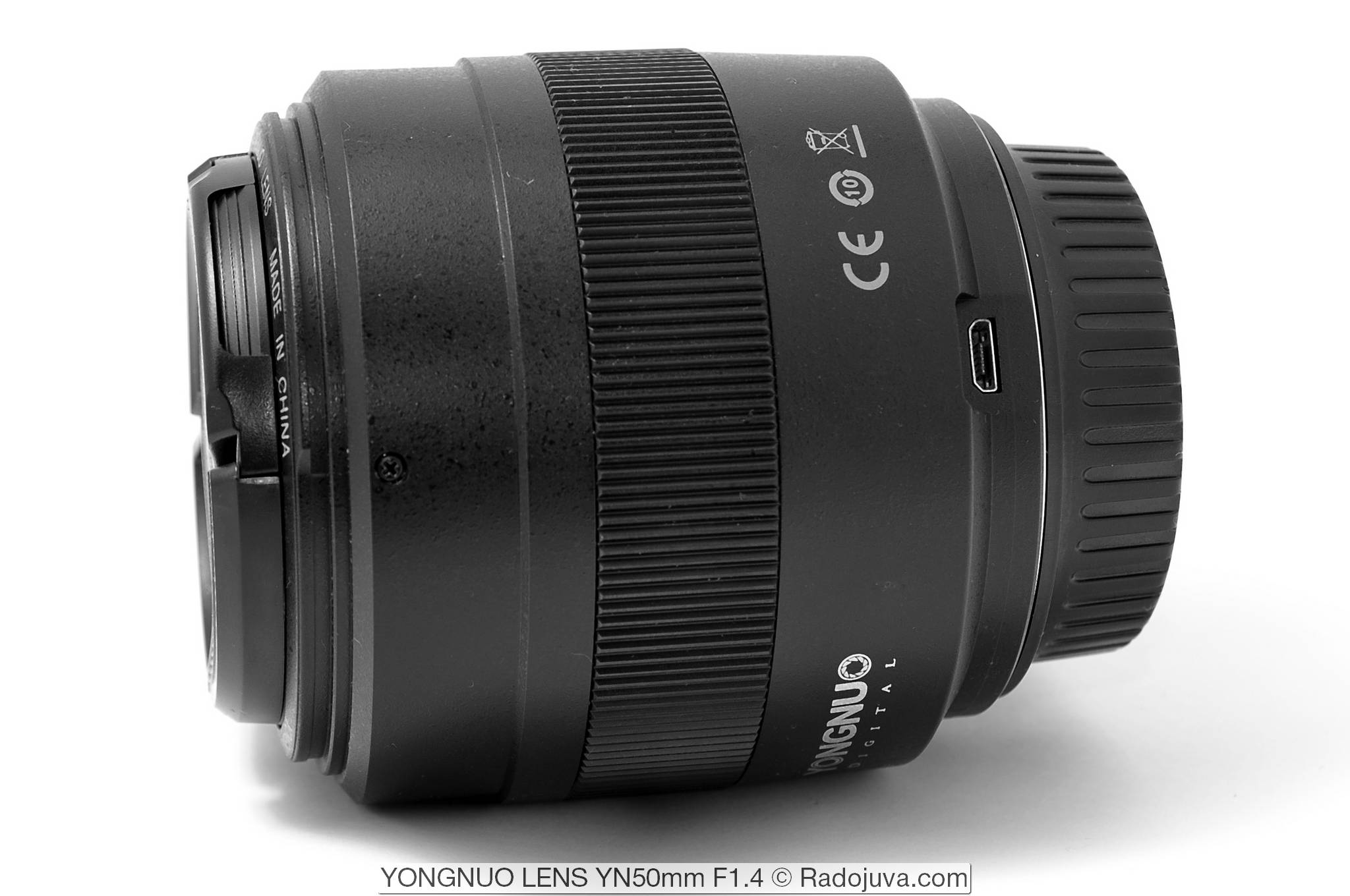





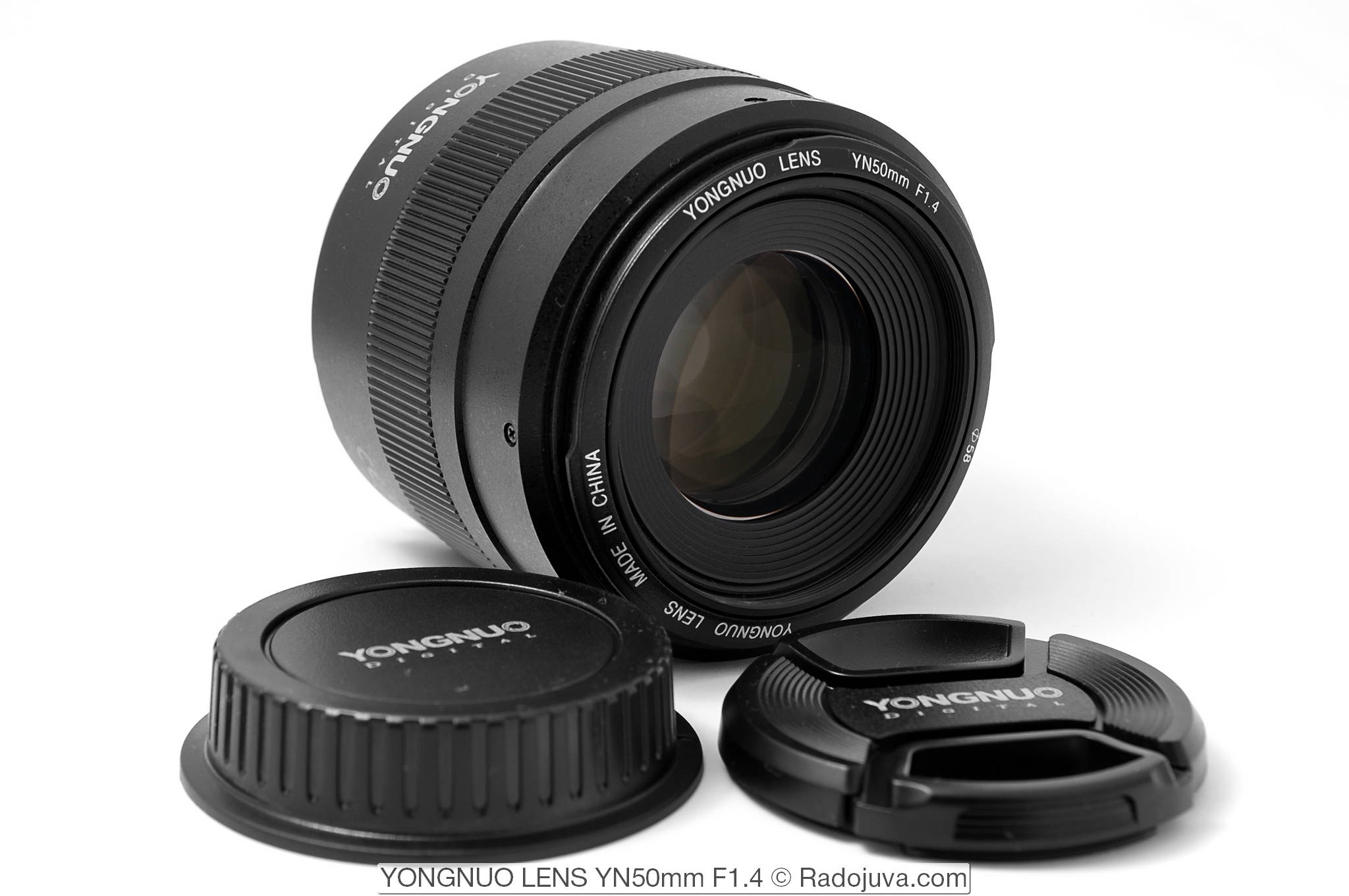
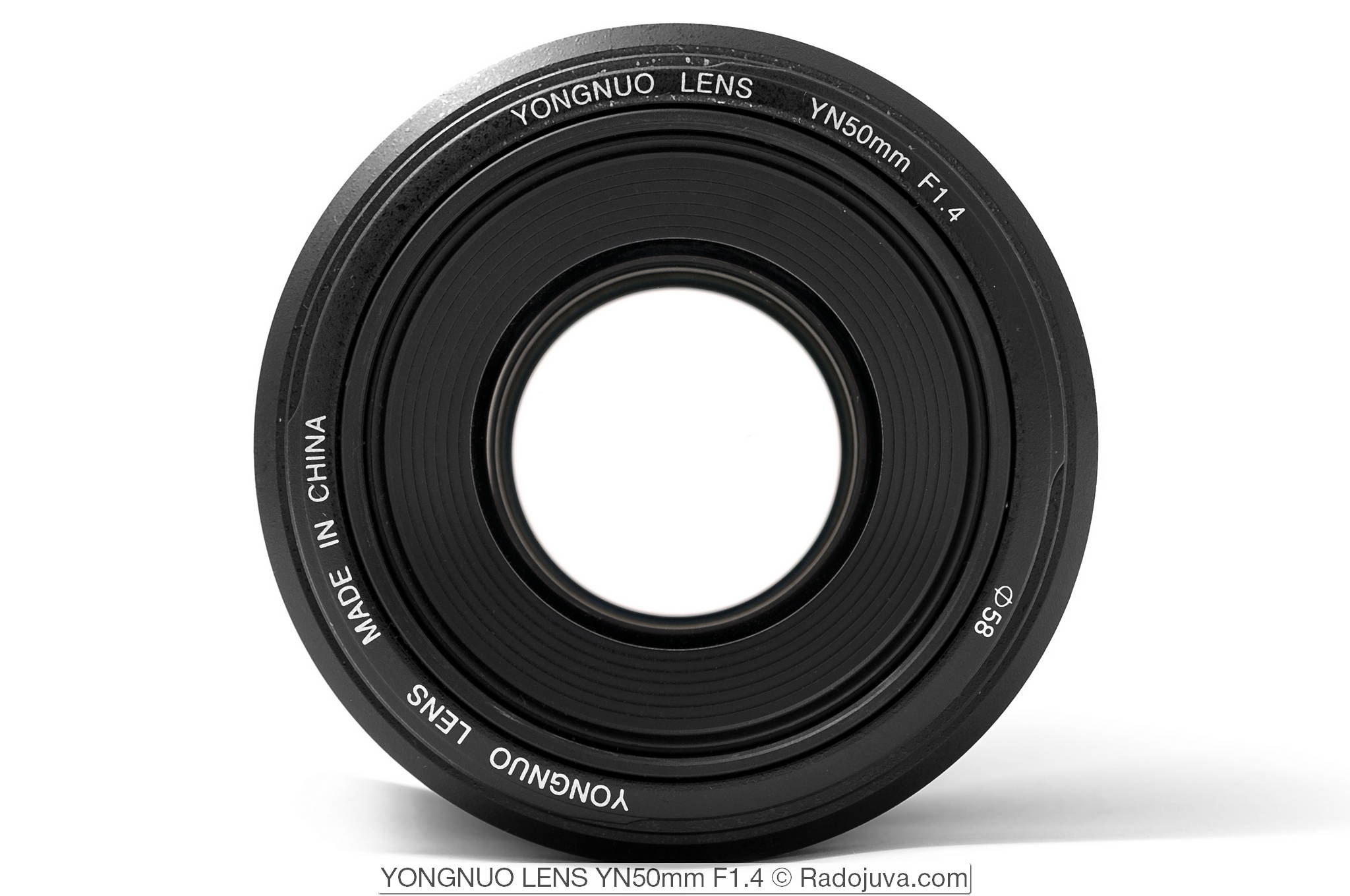
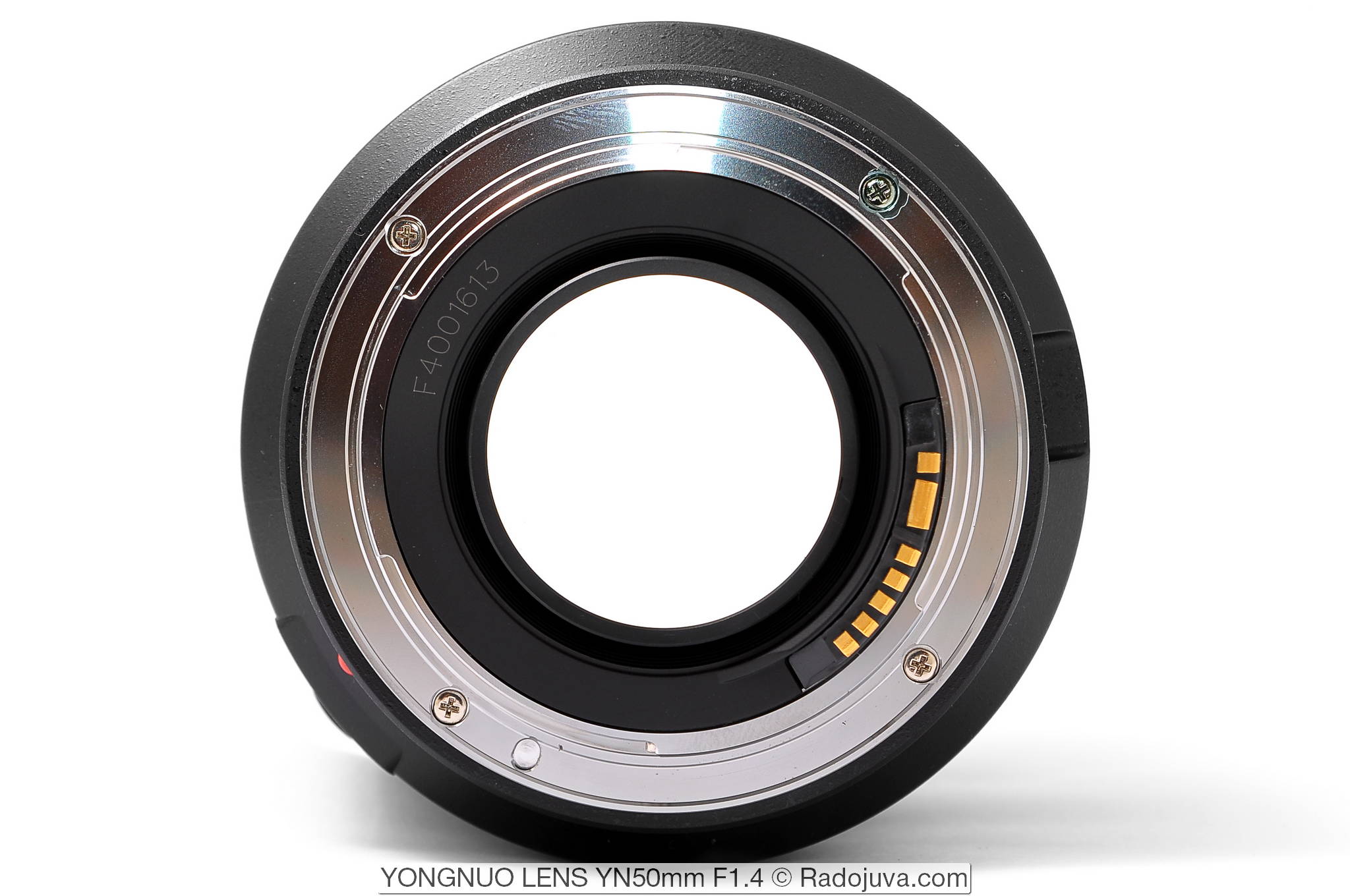
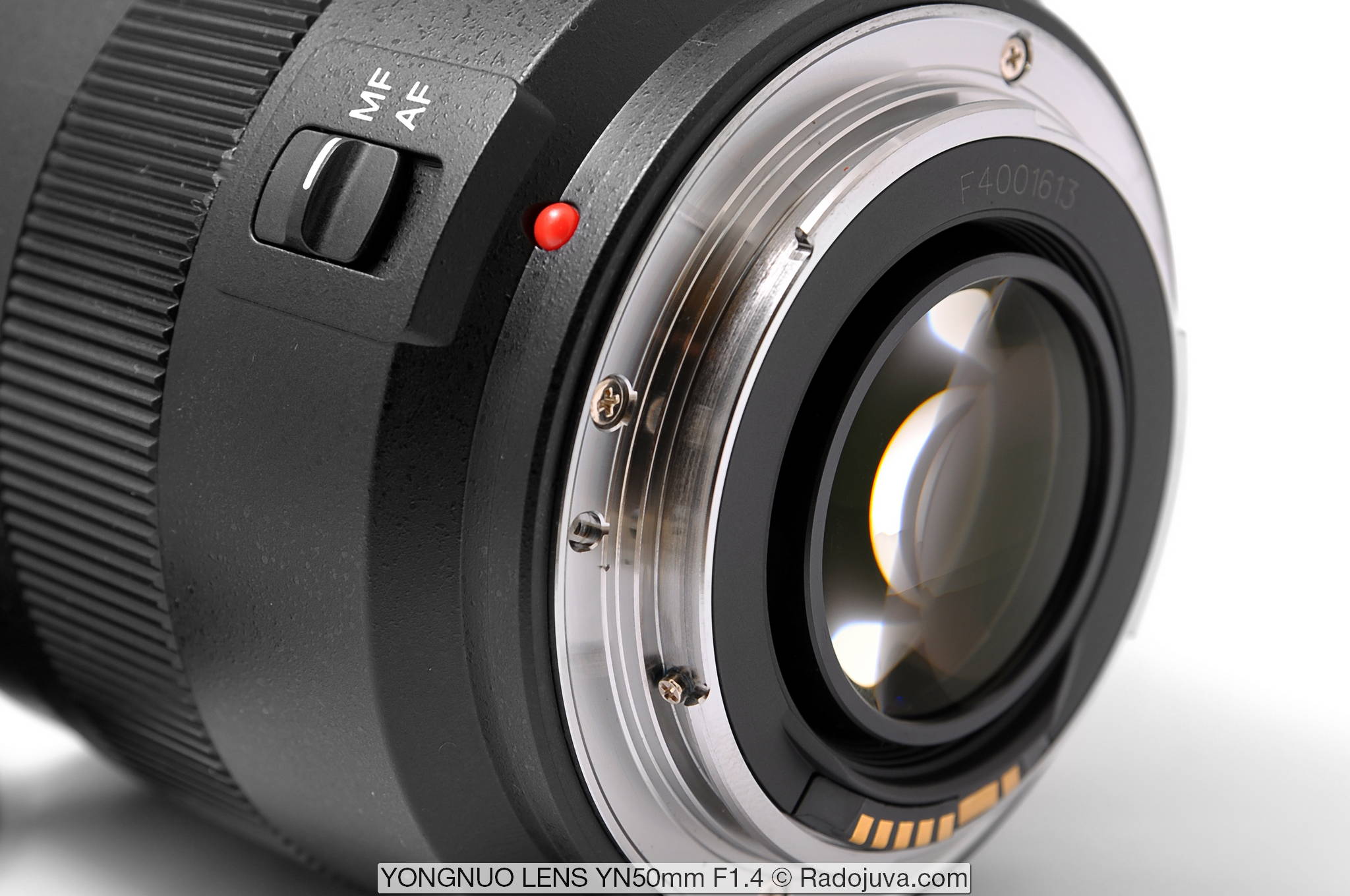
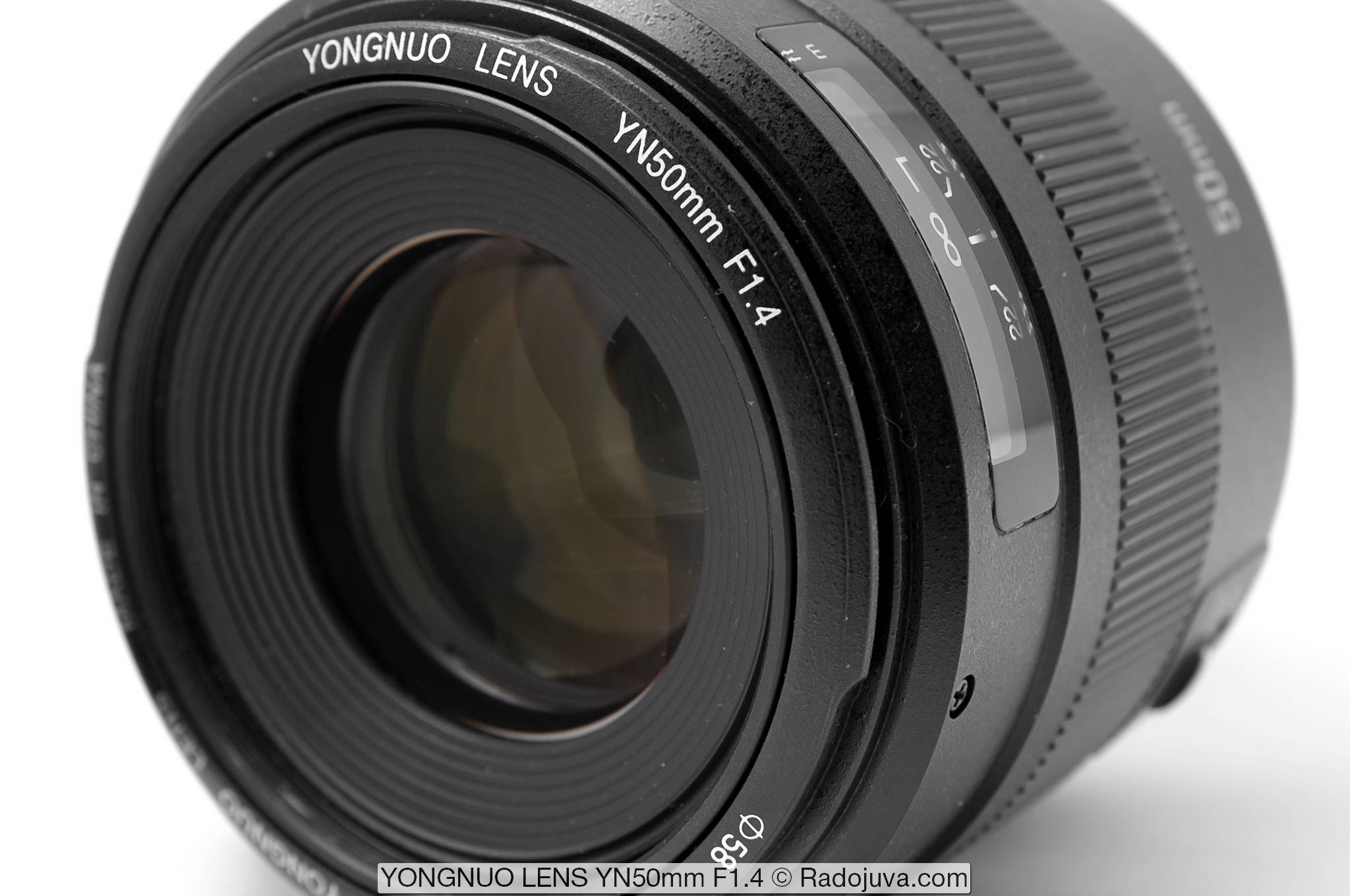
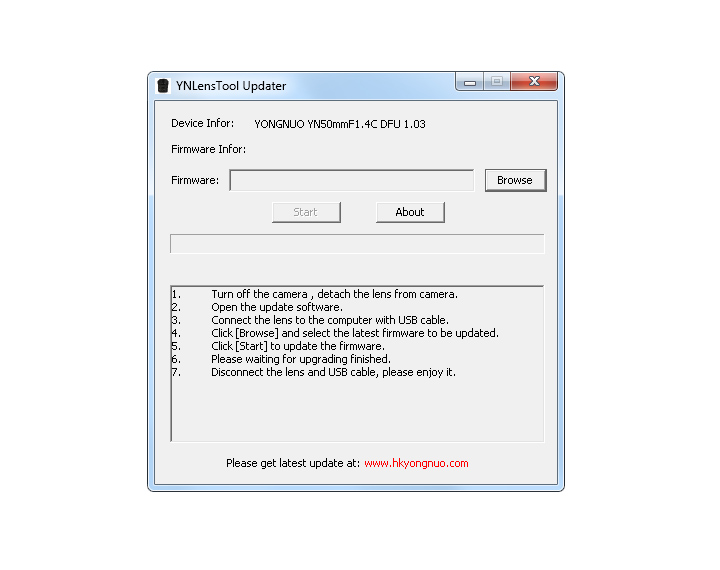
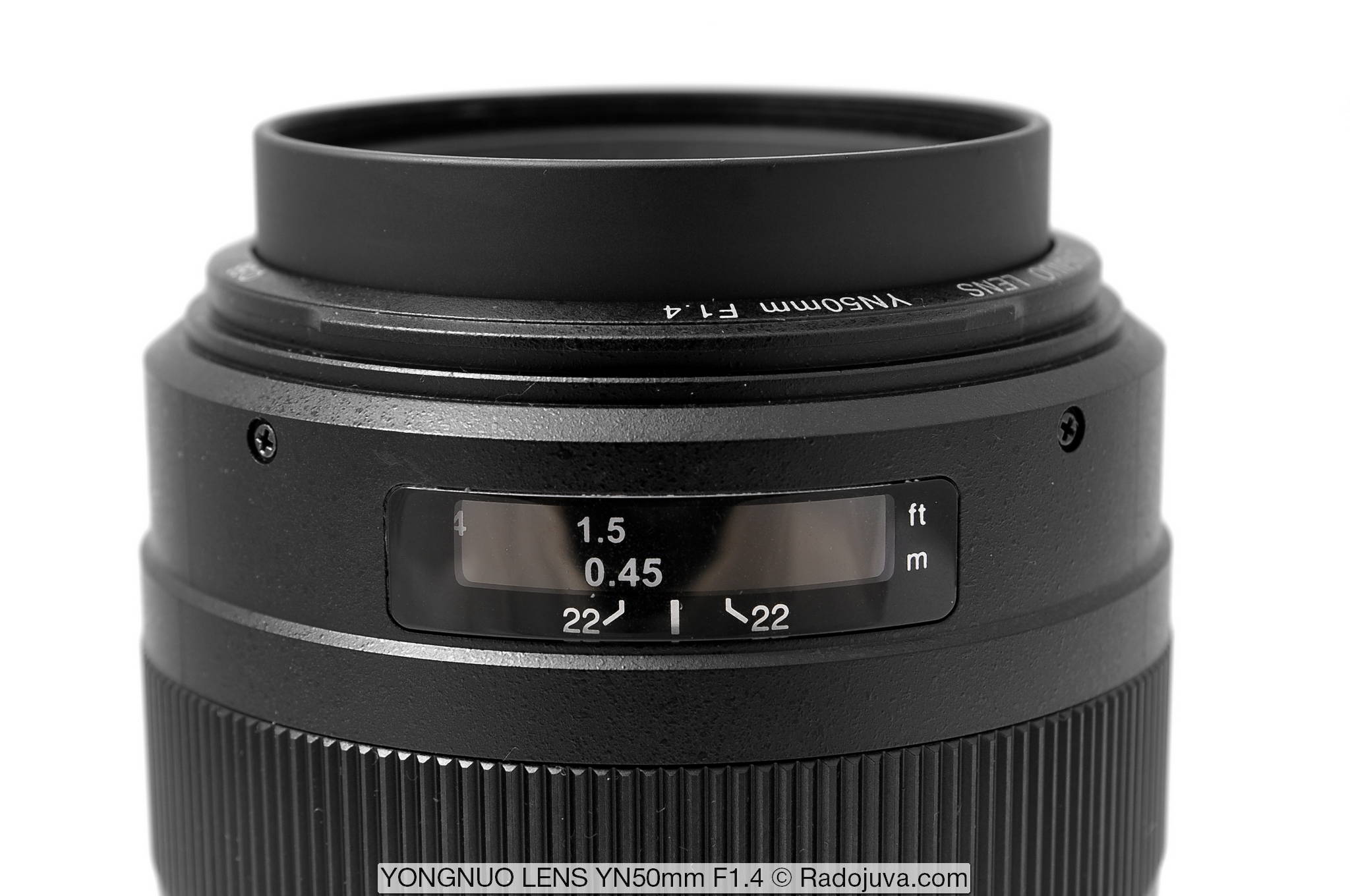
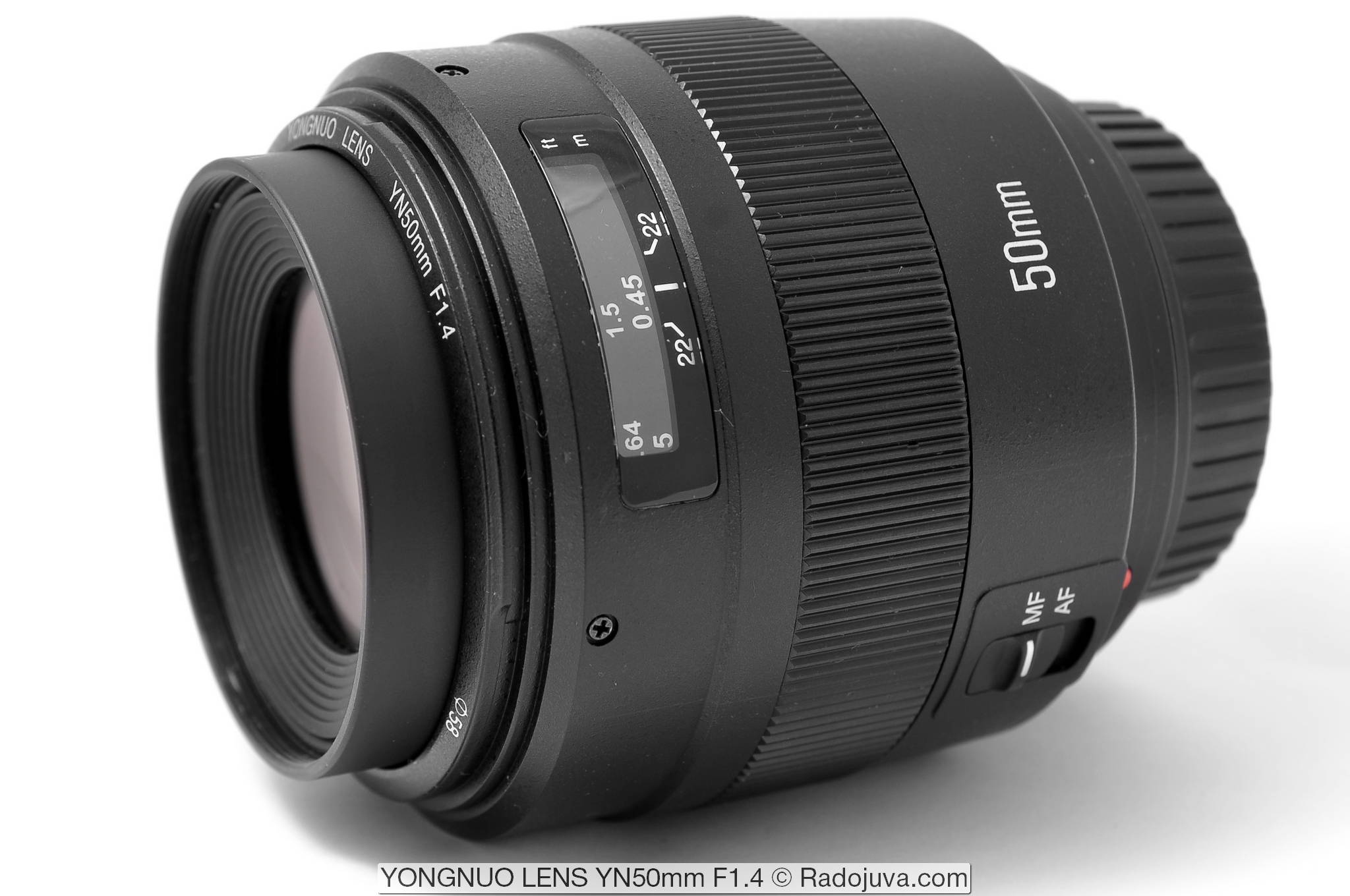































































































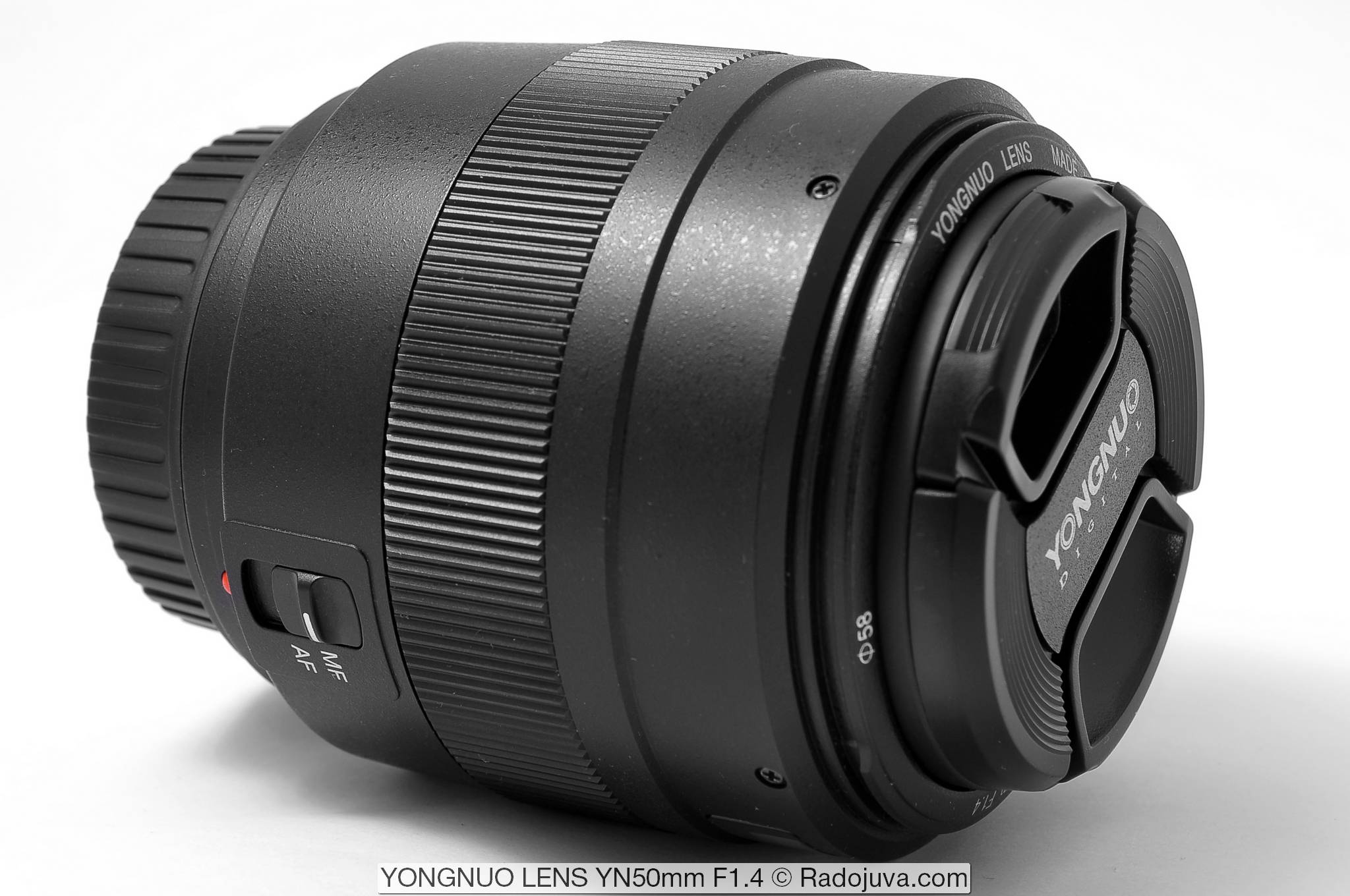
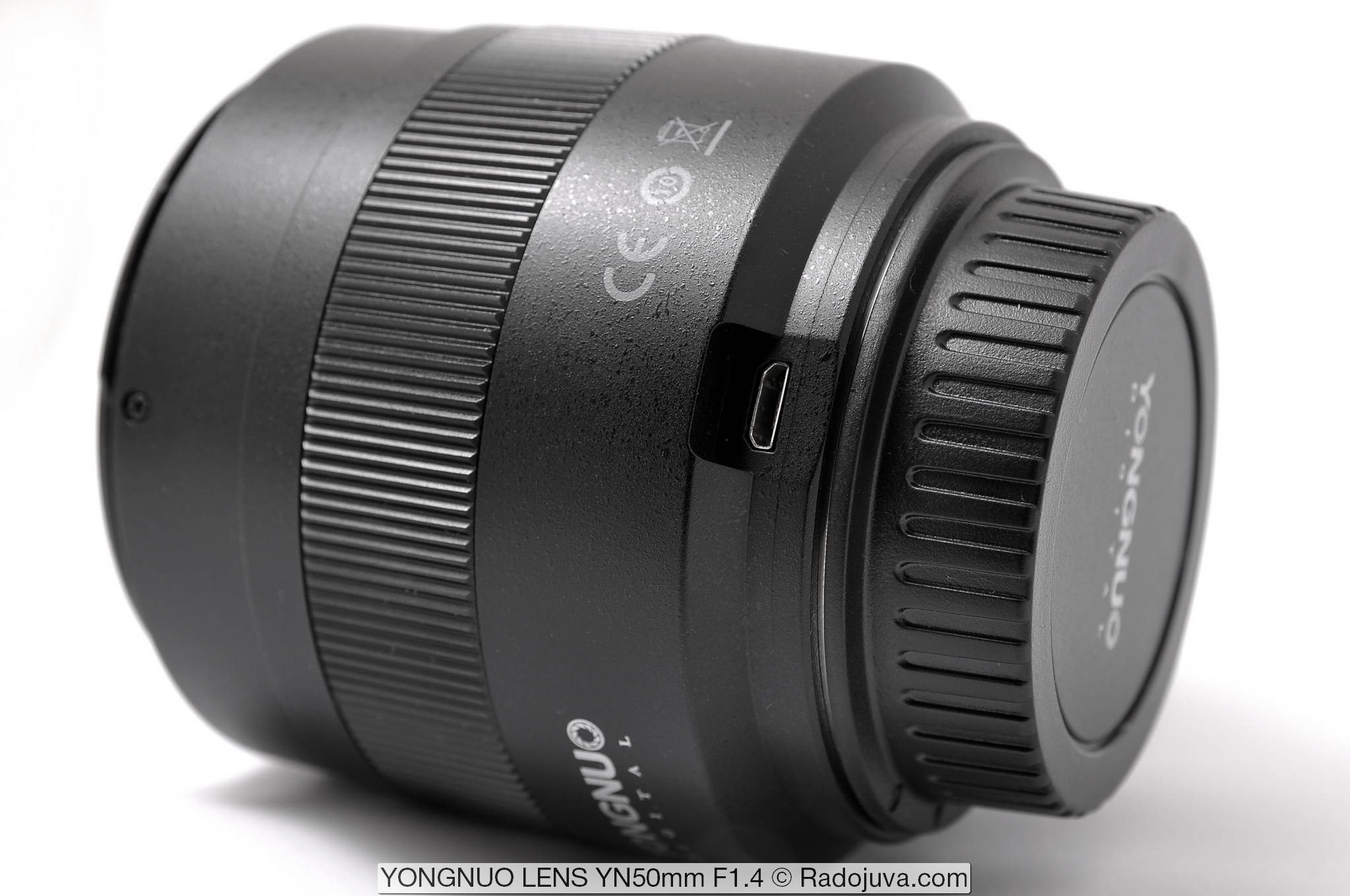
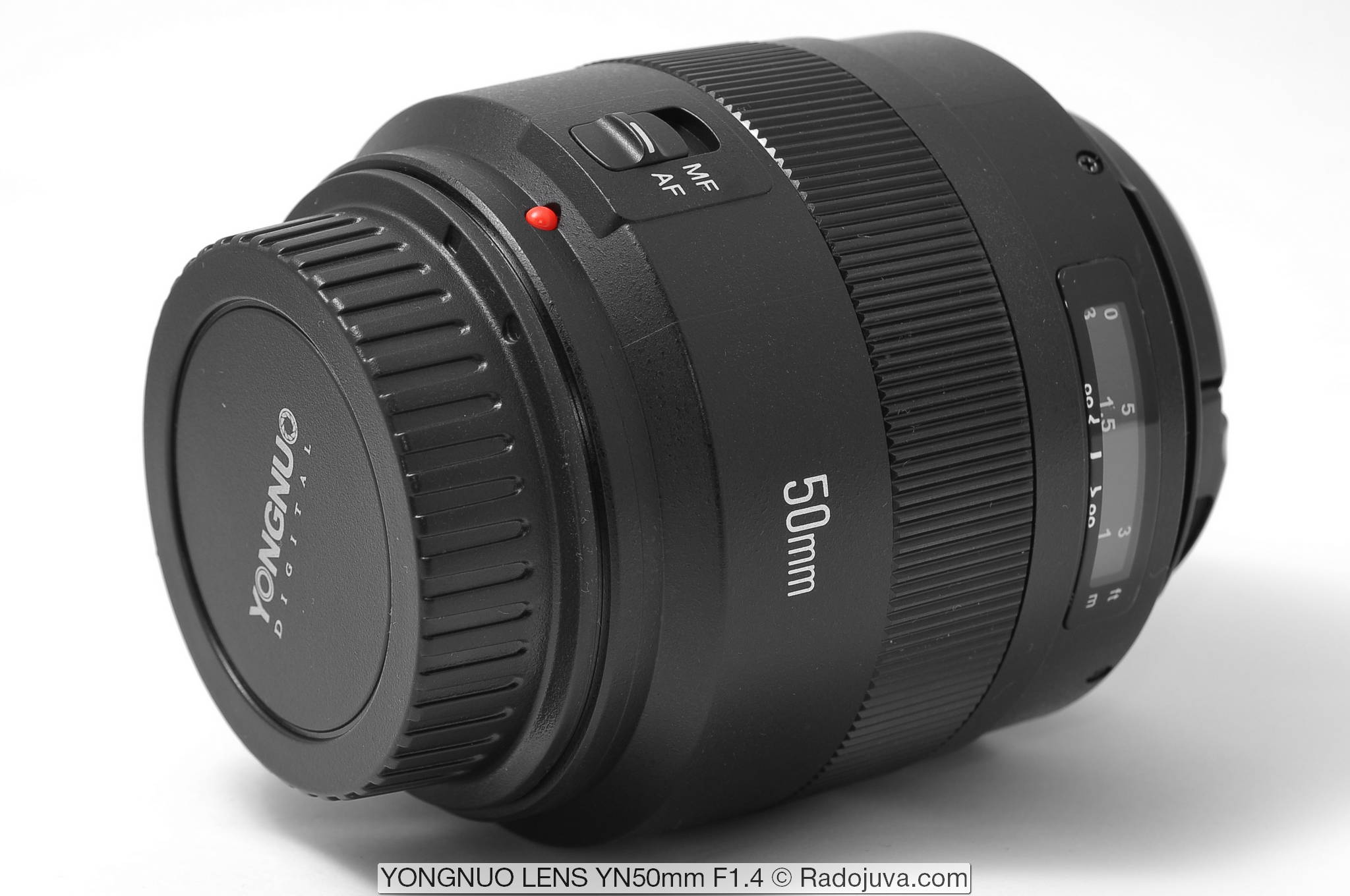
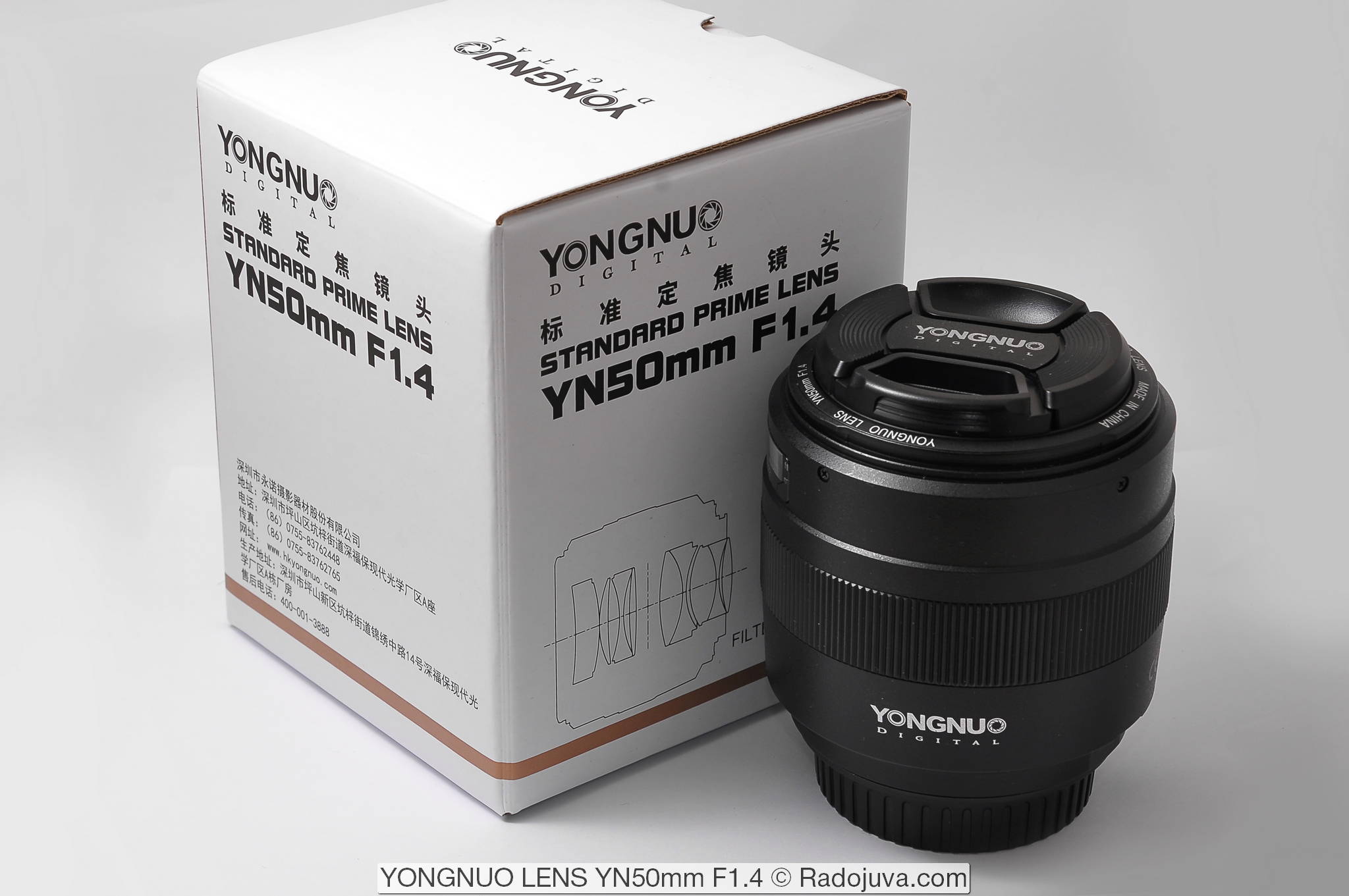
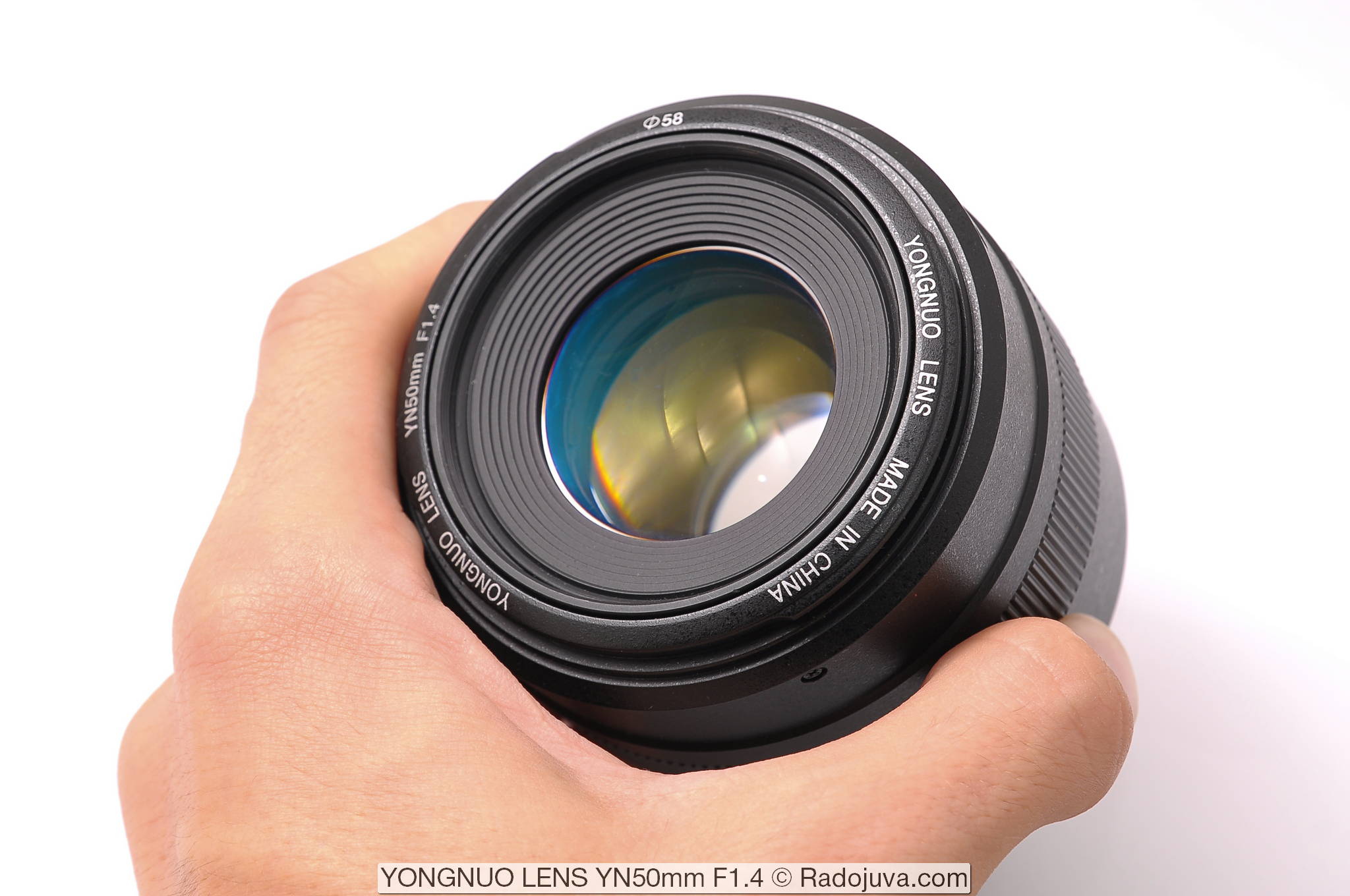
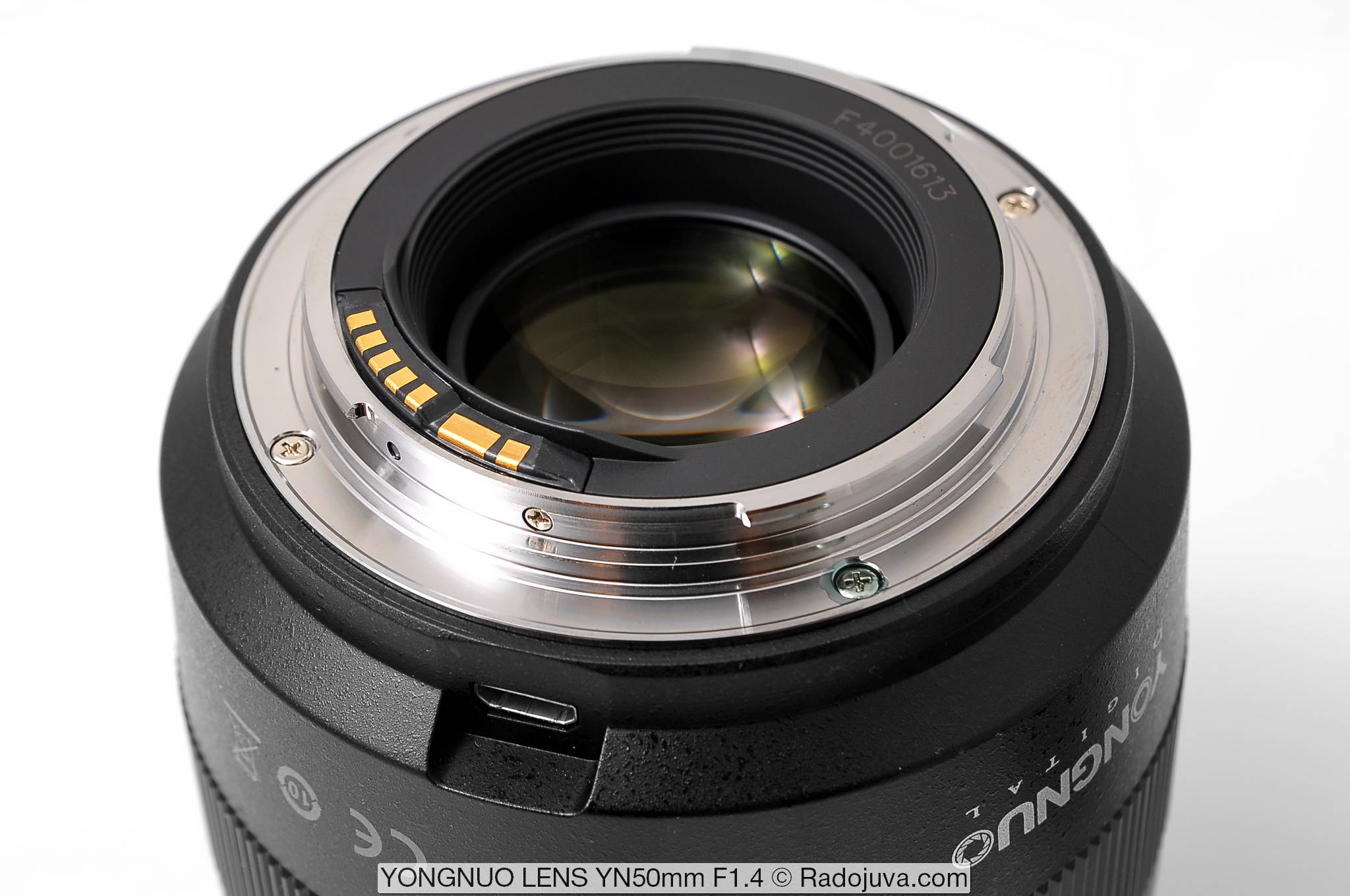

Long review. For honesty and details - special thanks
Pervopyatak is still very good :-)
And the lens is interesting. Arkady, thanks for the review!
PS> And why is the second penny so bad?
Magenta?
5D Mark 2 is also good. The first thing is purely for the soul.
The second is better, but it is much more difficult to find it in good condition, they are sold so dead that it’s even scary to press the trigger, those that are normal for even 100u.e. I’m ashamed to sell, and some people manage to ask for 1000u for them.
The second is better, it’s just more convenient to use, but the first is still cheaper.
Thanks for the review! I can hardly imagine this lens in operation, it is too great for a fifty dollars. Everything is turned upside down.
mark 2 is just a living legend) and still alive (used to its fullest) and because of the age and popularity of the legend ... I had four such cameras in two years ...
Ask your friends who will go to China, here a second penny in excellent condition can be bought for 500-570 dollars, in a condition of 95-96%, without a single scratch, you can also check the number of frames taken if you connect it to a computer. Until recently, they cost more than $ 700, but over the past year prices have dropped significantly ... You can add a little more and take 6D, which is much better in terms of image quality, its price is now about $ 700-750.
You can wind up the run any ...
The review is very well structured, it is easy to navigate and get the necessary information, including the nuances and details that are not in other reviews. Thanks.
A solid, interesting review of the Yongnuo 50 / 1.4 lens. Photos are wonderful. A lot of work in testing and preparing this review. It seems that for the popularization of this lens, the Yongnuo company should donate the lens to Arkady Shapoval ... :)
Finally, China has made a really decent budget lens. A really useful attempt to move away from the tradition of squeezing 6/4 planars is the progressive layout, modern picture and very high sharpness. If he had an even simpler and cheaper manual version, I would go buy it)
In any case, Zenith has someone to learn from.
Haha Zenith. To learn. It's five! No study will help the zenith!
Thank you for such a capacious and interesting review! I breathe evenly to fifty dollars, but I read with interest. I really look forward to a review of YONGNUO 14 mm F2.8 Just recently introduced it to the Ali shopping plan. It is very interesting how he behaves on the set of architecture and interiors (inside a dark room), on the shooting of a report (wedding / baptism in a church).
Great review! a lens at this price is just a godsend.
As in the case of any product, this product is also the result of the development of the production of a line of lenses, and therefore it turned out better. Chinese companies have already mastered the production of manual lenses, among which there are both unique and simply superior. Just yesterday Laowa introduced a whole new line of lenses including even a cinema lens. There are also several other very good companies. I already wrote that this is the result of mastering the production of optical glass in China itself, and it has long ceased to cost $ 1000 per 1 kg, as it was at the time of its production in Japan. According to some rumors here (I cannot confirm it on my own experience!), The Chinese brought its cost to $ 140 per coligra. So cheap lenses, besides, not burdened with brand allowances and super-expensive labor force in Japan itself, went away. It remains only to assemble a high-quality autofocus motor, or ring ultrasonic. I am sure that at the moment some industrial design company in Shenyezhen is already developing and bringing such motors to production, and they will not be as expensive as the brands want to present to us (Nikon still implants such motors only in some of its lenses , and even in the super-expensive 58 1,4 there is a cheap motor from 18-55 VR !!!! It is only called ultrasonic, in fact it is not real ultrasonic, not full-fledged!). So in the coming years, the Chinese will most likely master normal autofocus lenses, and this is good for users. They say that digital cameras are very popular in the world. This is bullshit! Worldwide sales are in the region of 25 million units, including all types of cameras, which is about 5% of the adult population of our planet, that is, the vast majority of lugs simply cannot buy them, because they are terribly expensive, in fact, this area is monopolized by several Japanese manufacturers, etc. .n. the competition between them is essentially a fiction!
25 million units per year (in fact, 2016 million in 13). Cameras do not get so old quickly that they change every year, plus when we talk about digital cameras in general, there are different substitutions (smartphones kill soap dishes, etc.). If you take serious cameras, then there is competition not only among the well-known 7-8 leading manufacturers (although this is more than enough for full competition). The new cameras also compete with the used segment, which are at a very good level today in terms of accessibility. The price of the new amateur Nikon D3500 with a whale is $ 500, the second-hand price of a D3200 with the same whale is $ 150-200. So the D3200 also outperforms the D3500 in a number of ways. Price Nikon D90 with nikkor 50mm f1.8d, which allow you to have advanced shooting control and get a picture of decent quality, $ 200-250. I'm not talking about the D40, D70, D80, which are even cheaper. Therefore, there is competition, and cameras are very affordable, if you look not only at new models.
What about the 750th canon?
Oh, he is very similar to previous models, both in control and in the picture. I did not find a breakthrough in image quality with a new 24 megapixel sensor.
One-handed controls are virtually unchanged even with the 450D-> 500D-> 550D-> 600D-> 650D-> 700D and is almost the same as the next 800D.
The focus of the Hybrid CMOS AF III is significantly worse than the Dual Pixel CMOS AF. Actually, the Hybrid CMOS AF III did not recover its fame and was used in only three cameras (m3, 750 and 760d).
But what I liked was the good focusing module with 19 cross-shaped points taken from the 7D, 70D models. Most likely, such a module was installed here to work well with an accuracy of 24 MP.
Thank you excellent. Most credit to YN would be 100mm f / 2 for Nikon and 50mm f1.4. These two lenses, at least in my eyes, greatly enhanced this company.
Thanks! It is interesting to read your reviews. I would like to see 14 f2.8)
On FF 5D, the difference with the native EF 50 \ 1.4 is very noticeable. And the difference, of course, is not in favor of the Chinese.
I don’t know what you were looking at, 6d is better in the center of the Chinese, only thinner in the corners
A certain John Aldred lives in non-our Internet, who writes reviews on all equipment in a row, including photos. He has a comparison of both on targets; regarding the sharpness in the center on the open, he writes that the Chinese has the sharpness looks fairly similar to the Canon, but with much better contrast. Whether this is an advantage - everyone decides for himself. Further, he declares that both lenses are pretty bad, and only those who did not shoot a good 50 \ 1.4 (that is, Sigma Art in his understanding) can seriously talk about them. I would treat this Sigma (for all its merits) as a true measure of human growth with skepticism. As for the difference between EF and Yongnuo in my perception: the color of the Chinese is noticeably worse, which is especially noticeable on the 5D Classic - this time; and (subjectively) the picture is sluggish and without the drive inherent to EF at its best - that's two.
Is the sacristy palpable or “the sharpness looks fairly similar to the Canon”?
Maybe a native 50 / 1.4 picture with a drive? or Sigma 50 1.4 Art with a drive?
I kind of wrote about the difference at the end. About "worse in the corners" and Eldred says. I can repeat about the drive: “typical of EF at its best”. Sigma has it, too, undoubtedly. Such - magazine-glossy ...
Sigma Art is a completely different level of optics with a different target audience. Canon 50 / 1.4 USM was released back in 1993 (25 years ago). The optical scheme for this Yongnuo, most likely, was also developed 25 years ago (and just now the patent has expired for it). Of course, it goes without saying that modern lenses, which are a quarter of a century newer, with aspherics and other yummy, weighing a kilogram, will put a Chinese half on the shoulder blades in some parameters. At the same time, I would like to note that Yongnuo is primarily intended to compete with Canon 50 / 1.4 USM and other fifty kopecks with 50 / 1.8. Ultimately, the Yongnuo 50 / 1.4 didn't go far from the Canon 50 / 1.4 USM.
Coexisting with 5D and 50 \ 1.4 USM for about ten years, I can imagine (the eye is used to) what the photos from your 5D + Yongnuo collection with a native lens would look like. The Chinese have gone, as they say, backward quite far, although all estimates, of course, are subjective.
You praise your swamp because you are used to it and consider it to be something of a reference. First, write that the Chinese is worse, then refer to John that they are the same, even if they are equally bad, then again drown for the original. There is only one subjective opinion - psychological dependence on the brand. What would happen if you shoot 10 years on the Chinese? We would get used to it, study all the strengths and weaknesses and drown for it, mixing some 50 / 1.2 eph with dirt
I do not consider 50 \ 1.4 USM a masterpiece of lens construction. I rate on a solid four. The Chinese on the four, IMHO, does not pull.
Sorry, but 50 \ 1.4 from canon is a complete mess - 1.4 even if sharply, then with incredible chromaticity, which in the sun often makes it useless.
There are more professional ratings for this lens: It offers excellent optical quality, especially when stopped down a bit ... 87% highly recommended https://www.dpreview.com/products/canon/lenses/canon_50_1p4
I’ll add on my own that they need to be able to shoot.
How long can you reproduce the old stories about the “terrible HA Canon 50 \ 1.4”? - Here is a diagram of his HA on FF (second from the top) https://www.lenstip.com/216.5-Lens_review-Canon_EF_50_mm_f_1.4_USM_Chromatic_aberration.html... HA below 0.08 are considered “low”, that is, “invisible, unless you specifically look for them” http://www.imatest.com/docs/sfr_chromatic/... The topic has been repeatedly discussed at Western photo forums, and in the overwhelming majority of problem cases we are talking either about single copies with defects, or about weak crop cameras, with which it really gives XA on the verge of low-medium. For a fast medium-price lens XA 0.07 at f1.4 with decent cameras - a very good indicator.
The new YN 50 1.4 is better than the old Keno 1,4, but not in everything. The old man is definitely not worth sleeping, he has excellent picture quality and high micro contrast starting from 2,8, very fast autofocus (it costs a lot!), Excellent construction and works with cameras without problems, and costs around 260 in excellent condition. YN beats it on open apertures, it is definitely better by 1,4, the diaphragm is fully working, which is impossible to say about the canon (I had it for one year). And it is impossible to compare both of them with sigma art because of the huge difference in price and class (art is an elite class, fifty kenon is an old budget glass, and YN is generally a cheap product), of course, that sigma is better not only this YN, but almost all other fifty dollars in the world, with the exception of the Tamron 45 1.8 VC (but the latter is not 1.4), and some others like the new Milvus from Zeiss and Otus too (the latter is generally a champion and costs at least $ 2000). The question is that for $ 126 in the world there is no other fifty kopeck piece with an aperture of 1,4 and with a quality that surpasses the native fifty kopecks from eminent manufacturers at open apertures (this is not a sensation, a new complex scheme with 4 low-dispersion lenses is used in the lens from YN, even surprising that it does not show an even better result). Let's pay attention to the fact that in the case of sigma art and otus we are dealing with monstrous lenses and in fact we get a picture from the center of huge lenses, this is part of the secret of their high quality in terms of resolution, well, the experience of designing and manufacturing lenses affects, but The very fact that a lens at times cheaper can compete in terms of image quality with more expensive ones, moreover from a manufacturer with little experience in this part of production, indicates that in a few years, users may get even better quality lenses for the same price. What else do users need? Name? Please, other brands are not going to go anywhere ...
Many thanks to Arkady for the review!
Everything is in the best traditions of Radozhiva: a complete technical analysis, where every little detail is paid attention to, excellent pictures that reveal the possibilities of glass, a very meaningful personal impression and an assessment of the advantages and disadvantages of the lens.
I myself am the owner of a bunch of Canon 5D + Canon 50mm 1.8 STM. There is also a Revuenon 50mm f1.4 MC with 8 aperture blades.
With great interest I look towards Yongnyo 50mm 1.4.
The Canon 50mm 1.8 STM has a number of complaints about the quality of images at apertures from 1.8 to 2.5.
And the sharpness is low (even for the first shoot, where it is easy to get good sharpness), the bokeh is rattling, the circles in the blur zone to the edges of the frame are strongly compressed on the open aperture.
For myself, I read the diaphragm with 2.2 for portraits. But even there, at the cost of sharpening, contrast and correcting the shape of the circles in the blur zone is the appearance of a rattling bokeh. Apparently, the reason for this is chromatic aberration at the edges of the circles.
Whatever one may say, the optical scheme has not changed since 1987, when the first Canon 50 mm 1.8 “Grandad” was released. There are no miracles. Focusing is quiet, but Canon 17-40mm 4 and Sigma 70-200mm 2.8 macro II focus noticeably faster. There are no complaints about the accuracy.
The Revuenon 50mm f1.4 has a pretty nice drawing. Bokeh is very soft, the transition of depth of field to blur is smooth. Chromatic a little, it is not particularly annoying. The main complaint is about spherical aberrations (which the Canon 50mm 1.8 STM also has). There are a lot of them on f1.4. At f 1.6 (the intermediate value between f1.4 and f2.0 clicks), the situation is significantly straightened, sharpening and contrast are increasing, but there are still problems. At f2.0, everything is fine in the center of the frame: sharpness and contrast are at a level, spherical aberrations go away, a little chrome, nice bokeh. Photographed myrrh and compared with the Canon 50mm 1.8 STM, the level is comparable. Strongly better than the old Helios, who screwed it back to Zenith.
But focusing without a live view on one viewfinder, even as large and bright as on a nickle, is hard for me. There are too many annoying misses. A chip adapter with confirmation of focus does not help much.
As I understand it, Yongnyo 50mm 1.4 has everything fine with sharpness in the center of the frame, not bad bokeh (although there is a lot of chromaticity at the borders of circles in the blur zone), a decent contrast. Autofocus level. Questions for color rendering. I know the color of the first penny well, and so there are noticeable problems with it. The original Canon 50mm 1.8 draws nicer. On cats and flowers is not so noticeable. but in people the difference is striking.
The monocle effect that the Canon 50mm 1.4 has here, as I understand it, is almost not manifested.
Canon 50mm 1.4 is confused by the following: at a price comparable to Yongnyo for used Canon, Canon has a strong monocle effect, which he writes about http://www.vlador.com, a very fragile focusing motor, which is afraid of any careless movement. Sharpness at comparable apertures, according to tests, is not far from the Canon 50mm 1.8 STM. It is not surprising - the generation of optical circuits is one.
There is also the Sigma AF 50 / 1.4 DG EX HSM, but there is a decent variation in quality, plus I need to budget the lens alignment on my camera. Otherwise, a very decent glass.
Arkady, I turn to your experience, in your opinion, what fast aperture you would take on a Canon 5D for amateur photography, perhaps for periodic earnings, of the following:
1. Used Canon EF 50 / 1.4 USM.
2. Used Sigma AF 50 / 1.4 DG EX HSM (not Art Series).
3. The new Yongnyo 50mm 1.4.
Thanks again for your work!
Regards, Alexey.
Thank you for sharing your experience.
I would recommend looking in descending order: Sigma 50 / 1.4 EX + hand over for alignment if there are problems (it is not so expensive), then on the native Canon 50 / 1.4 USM (fast, native, easier to resell if something happens) and already then on Yongnuo 50 / 1.4 (an option that is "not a pity" and is quite functional).
In general, it seems to me that it would be better to add any 50th to 1.8 85 STM, there the “pattern” is already more pronounced and there will be a much more “solid” picture.
Well done Chinese! Value for money on a level.
Colorful autumn review, with your photos the world is more beautiful))
Mi-mi-mi, not a comment))) Nya
On targets it turns out like this: the sharpness in the center of the Chinese is slightly worse, at the edges - much worse. Color, IMHO, is much worse. As a result, the picture is driven by increasing the contrast. Generally speaking - this is a technique designed for suckers. The eye, accustomed to higher quality optics, sees the general imbalance of such an image.
Well, well, has your eye seen 10 years through fifty dollars and the oldest 5d still something to distinguish?
On the subject of Yongi well done. Here are comparisons on the forehead https://www.youtube.com/watch?v=HgzrGWBPVdU
It should be understood that the Yongnuo 50 / 1.4 is aimed at amateur photographers. A huge number of amateur photographers (not to be confused with sofa tech gurus) will not find the difference between a Chinese and an original from the picture. Enhancing contrast is a common technique and generally useful for optics.
It is not clear why some readers compare this Yaga with any Sigma Art, which is 10 times more expensive.
Honestly, I don’t quite understand what is so special to be removed with such expensive fifty dollars? In theory, all the same can be removed either at 35mm or 85mm. Or even on some 70-200 2.8 VR. Plus, they can do something that fifty kopecks cannot, it’s not a pity to give such money for them.
But I don’t understand a lot of things, maybe all these sigma are really needed by someone?
I described a little higher what to compare this Yongnuo with Sigma 50 / 1.4 Art not entirely correct. Well, at least with a new Canon RF 50 / 1.2 L until they try to compare.
YN50 / 1.4 is somewhere in the middle between budget 50 / 1.8 and Canon 50 / 1.4 USM. Actually, the same Canon 50 / 1.4 USM simply does not have alternatives at an affordable price. The closest is Sigma 50 / 1.4 DG HSM EX, which is usually even in a state of use. costs more. But Yongnuo made an inexpensive and quite suitable solution. Of course, YONGNUO is generally worse than Canon 50 / 1.4 USM, which is actually evidenced by the paragraph “Differences from Canon 50 / 1.4 USM”In my review.
At the same time, indeed, one gets the impression that a fifty dollars for 150 dollars should be removed as for 1000 dollars. Probably because they are trying to draw parallels between the Chinese and Sigma 50 / 1.4 ART.
So all the same: of course, worse, optical performance at a similar level, or "I am absolutely delighted"? - All this is not too packed into a single weighted estimate. About
boosting contrast on problematic images is a separate topic.
Everything is as in the review and everything is quite simple.
In general, Yongnuo 50 / 1.4 is worse than Canon 50 / 1.4... A common case is not only optical performance, but the operation of the lens as a whole, including everything related to focusing, service, and so on. These details are just highlighted by me in the section Differences from Canon 50 / 1.4 USM.
Optical performance, indeed, at a similar level. In some ways it’s better (the same contrast), in something worse (resolution at the edges).
And I'm really delighted with the lens, this is my personal impression, made in a separate column My experience... As you should have noticed, my impressions practically do not affect the final results, I am not trying to hide or embellish anything, at the same time I admit that I could mistakenly indicate some data in the review. If you or someone else finds inaccuracies - please unsubscribe, I will correct it.
If you try to explain my personal position on the lens, then it is very simple. First of all, the price / quality ratio acts here. I consider it a great blessing to use the new autofocus lens with F / 1.4 for the amateur photographer. I want to note once again that my dear Canon 50 / 1.4 costs 2 times more expensive than the Chinese counterpart (I took the cost data from a reliable and time-tested BHPhoto website here 179 dollars and here 349 dollars). And it’s not always possible to buy used Canon 50 / 1.4 for the cost of the new Yongnuo 50 / 1.4. Some users are simply afraid, or do not want, or do not like, or do not know how to check used. technique before buying.
Thank you, everything, as usual, is correct and intelligible. To the question of whether an ordinary amateur is able to distinguish between pictures from both, I think to return.
Now - regarding recognition. Let's make a simple experiment: one camera - 5D. In order not to give Canon a big handicap, let's convert the pictures to monochrome and compare the image at sufficiently closed apertures (your shot is f6.3 on Yong, f9 on Canon), since at 1.4 Canon's handicap will also be too large. There is an opinion that approximately starting from f8 all fifty dollars become the same in the picture - this is also not superfluous to check at the same time.
https://ibb.co/e2y3K9
https://ibb.co/nsVZ99
There are, in fact, two questions: 1) is an ordinary amateur able to see what has been shot with different lenses? 2) is an ordinary amateur able to determine in which case the optics are of better quality? - I, as an ordinary amateur, answer both questions in the affirmative.
Questions with examples are framed / asked incorrectly. Let's wait for the lovers to answer :)
The subjects are different, the time is different, the light is different. The YN had a 6.3 aperture, the Canon 9 had a different in-camera setting. To top it off, the footage is transformed by some editor with some influence that there is no information about. That is, the comparison conditions in advance are incorrect. With all this, the picture with water lilies, subjectively, loses in all respects to the picture from YN. Therefore, if there was a desire to show that YN is superior to Canon, you have succeeded. If the desire was the opposite (Canon is better than YN), alas, no, failed.
OK, quite expected ...
Yes, as expected. Remove water lilies with some settings in one environment, remove architecture in other conditions with different settings, shake it all with a program and discolor it. And then ask the question: is it clear what is shot with different lenses? And is the quality of the lens used to shoot water lilies higher than the quality of the lens used to shoot architecture? Amused, of course.
Glad I gave you pleasure
“I think they are the same” (C) Trying to find the difference when viewing the reaped full sizes is very exciting. The only thing I see is soap on the edge of the frame, and both
There is a contingent of photographers who see soap in the corners of all lenses and this is an occupational disease
Perhaps, though not always and not always
The difference in the drawing of the optics and on the card ten by fifteen is visible
Oooh, talk about drawing has gone, about high matters ...
I want to note two things. 1) I have not seen reputable reviews claiming that YN is generally better than the originals. This is not confirmed here either. Himself owned for Nikon 50 / 1,8 and 35 / 1,8. Yes, they are somewhat inferior to the originals, but at the same time they are better than many other alternatives; the disadvantages are not that great; for people who cannot afford the original - a great solution. Therefore, I do not know why you decided that everyone claims the superiority of YN over the originals, and began to refute this myth. The myth was invented by you. There is still no substantiated evidence that YN is generally superior to the originals. 2) About how the price matches the quality, this is an individual decision. If you know both lenses and choose the original, then the difference in price does not cover the difference in quality. If, on the contrary, knowing both, you choose an analogue, then the difference is greater than the difference in quality. Everyone decides for himself, and trying to put his ideas into others, especially without holding the lens in his hands, is unsuccessful.
There are two myths here (in the sense - on the site): one about “optical proximity”, and two about Yongnuo's outstanding price-performance ratio. Both are presented as myths.
For fun, please write how much you think this lens should “really” cost, thank you.
It is worth focusing on the latest modification of the native 50 \ 1.8, slightly more expensive than this fifty dollars, apparently taking into account the presence of aperture 1.4. This, IMHO, is quite a reasonable price. Marketers clearly understand the true benchmark for this lens, which would not be outlined in commercials.
Still answer, what do you think should be the real price of this lens?
Your position is clear, thank you. We look forward to the following exciting tests and comparisons, do not forget about the water lilies :)
If there is a desire to continue the banquet ... Let's compare in color at 1.4 on the same 5D at the same distance of 40-50 cm to the object. Let's give Yong a head start in light and take a photo from Canon in cloudy / rain conditions. In this case, we will do without water lilies :)
https://ibb.co/mwoGwp
https://ibb.co/hHaUGp
Are there any more people wishing to speculate about "optical proximity"? Therefore, I would prefer 50 \ 1.8 STM - I don't see much sense in such a 1.4, like that of a Chinese.
Of the examples given, the Chinese drawing is more beautiful.
For all the specificity of this estimate, it also does not indicate "optical proximity" :)
You just convince yourself that the canon bought at a flea market in a killed state for 12 000 r. better than the new Chinese for 10 p. )))))
Firstly, strangers are not poked. Secondly, Canon is new from the store.
Oh, these professionals ... The YN lens does not try to jump over the native canon 1.4, this is the lens that gives 1.4 for little money, so to speak the budget 1.4. As they say, find 1.4 cheaper)) This glass is for amateurs, well, they will then see its shortcomings and change to a more expensive one, and someone will be delighted at all. I haven't looked at the originals, but I can roughly imagine its shortcomings in the picture, but for such a price, why not. Many Madness He Sigma 1.4 EX HSM. And I had this sigma, and I was also delighted until the moment when I snapped a photo on it on vacation and 95% of the photos taken during the day turned out to be just a marriage for my eye, although my wife was delighted ... was. That is, these are micro-slips in focus (perhaps my cant), and the general "swell" of the picture, and HA are simply cruel. Then I did not suspect that 1.4 is not always “cool”, well, my inexperience also affected. I didn't put up with this, I sold sigma, drove nikkor 1 / 4G (in general, the same, only the focus is well sooo slow) and in the end I already took sigma art - that's where you don't have to steam what aperture you have. And only after the photo from the art, the wife saw all the shortcomings from the old sigma. Here are two stories for you: mine - how I finally came to what suits me; and his wife - as she would not even have noticed all the shortcomings. I would love to take some YN, but I have all of their focal lengths, I'm waiting for 85 mm for Nikon.
And professionals themselves know what they need and would not even pay attention to this lens.
You don't have to be a professional to notice in monochrome the presence of only four shades: dark, light, dark gray and light gray - with practically no gradations. This, by the way, refers to the issue of driven contrast ...
You don’t need to be an amateur to look at the histogram and see a fairly typical distribution of all tones along the graph, which does not confirm the hypothesis of only 4 shades in the monochrom. If you programmatically calculate the tones in the image, it will also show the presence of all 256 levels. Finally, using any editor that displays the levels of the point the cursor is on, you can easily navigate the image and watch how these levels change and make sure that the gradients are in place. Why such a hypothesis about the absence of gradients is not clear, because gradients have not disappeared either visually or programmatically.
PS Tries, tries to jump ... Here is from their Russian site: YongNuo YN 50mm f / 1.4 Canon EF - an analogue of the popular Canon lens among amateur photographers, fully matching, and in some aspects even superior in quality.
Please note that if you took data from here, then they’re shown on the site a version that is not on sale, described by me in the section Historywhich copies Canon 50 / 1.4 USM in almost everything (optical design, case design). Based on this, your remark loses all power, as it relates to a completely different lens.
I saw it, but I didn’t take anything from here. The price with BHPhoto (180 cu) I think is quite reasonable. Another question is that, choosing an inexpensive fifty dollars for Canon, I would prefer to buy there a native 1.8 STM for 125. Essentially the same thing, only without 1.4.
Yes, the 50 / 1.8 STM is a balanced solution for the amateur, and it’s sold like hotcakes :)
I'm sorry, I didn't realize that your comment refers to “jump over”, and not to the price
Everything is OK
About “trying to jump” I take the words back. Looked at their official websites of Hong Kong - nowhere is there a word about the existence of Canon.
Yes, in the vastness of the CIS, everyone writes what he wants. There are also comments on that site amusing. The 50 / 1.4 lens from this review was announced only at the end of spring 2018 (on sale only since summer 2018), and the previous lens was not sold at all, but there are a lot of comments under the description, and some have been since 2015. Believe it now :)
Also noticed this. In my opinion, reviews are somewhere copy-paste, and dates are taken from the bulldozer
Gentlemen, it seems to me that on the first pyatake he ate a battery in the off state. The battery is new, this has not been seen with other lenses. I write off the fact that they sent me a lens with a serial number ... 1, maybe later something was changed in the wiring diagram.
Good afternoon, Dmitry.
At the very availability of nickel. I look at this Chinese glass with interest.
What are your impressions of working with him? How is the picture, autofocus?
Was it possible to compare with original Canon glass?
Thank you.
Good afternoon, Alexey!
Now this glass is not with me, but the impressions from it remained pleasant: the photos were sharp, the colors were pleasant. I did not notice any problems with autofocus on the first payatake (I shoot mainly at the center point). Now I am thinking whether to buy it again ... it's still more pleasant to shoot with an autofocus lens. The only negative, in comparison with my main Zenitar 1,9 / 50 - Yongnuo is heavier :) From my own lenses I can only compare with the old 50 / 1,8 “plastic-fantastic”. In terms of mechanics, of course, Yeong is better, but according to the picture, Kenon, it seems to me, is more interesting with a colorful bokeh, but this is not for everybody. There was also Kenon 40 / 2,8 stm - I really liked it! Compact, sharp, the picture is juicy, but darker when open. I used it at 6D and with its high ISO the relatively dark open aperture did not seem to be defective.
I also recently bought a cheap Chinese lens: the 7artisans 55mm f / 1.4 for the Panasonic Lumix DMC-G80 camera. Here is a recent photo from him (inside camera .jpg without processing, aperture 2.0): If China begins to make inexpensive high-quality lenses, then branded models may have difficult times. :)
If China begins to make inexpensive high-quality lenses, then branded models may have difficult times. :)
Thanks for the review! Log and clear!
Useful *
Arkady, thanks for the review! Are you planning to review an analog for Nikon?
Yes, they promised to give me 50 1.4 for Nikon for review, most likely next month.
For little money, you get a usable lens…. And the money is considerable! I don't know about Ukraine, but in France you can find the original Canon 50 F1,4 in good condition for 150 euros.
It is this Canon that I would not risk buying used. Subtle and it requires careful hands.
Well, 150 euros is not much money)
In France, indeed, they are considerable. There, many are far from chic - this is not Germany ...
Nevertheless, 150 euros for the new autofocus full-frame 50 1.4 is cheap and even very cheap.
As far as I understood a colleague from France, with regard to 150 euros, the discussion was about the price for a Canon EF 50 \ 1.4 used. For comparable money it can be purchased in the Russian Federation.
In the CIS, almost everyone does not shine, nevertheless, buying photos is not for 150 euros)
Firstly, it was a lens, not a camera. Secondly, one should hardly be proud of such consumer strategies. Finally, in the third, the bulk of at least the local visitors is obviously rented for inexpensive crop.
No doubt, there is nothing to be proud of, but such money is lifting for many. I understand if we were talking, for example, about the top 70-200 - yes, there is a lot of money, a salary of two. And then ... I don’t know
Yes, in France, they are also lifting, it's just that people there estimate costs differently. There, in the provinces, a lot of people live on salaries significantly less than one and a half euros, and this is about the same as living in Russia for a thousand rubles. per month. Essentially - from hand to mouth, as the Germans say. Look at how many people from non-poor countries shoot something like Canon xxxxD on flickr and don't bother. According to my estimate, in order to shoot for yourself for pleasure without showing off, now you need a budget in the fork of 30-100 sput. on everything, which, of course, is not spent in six months.